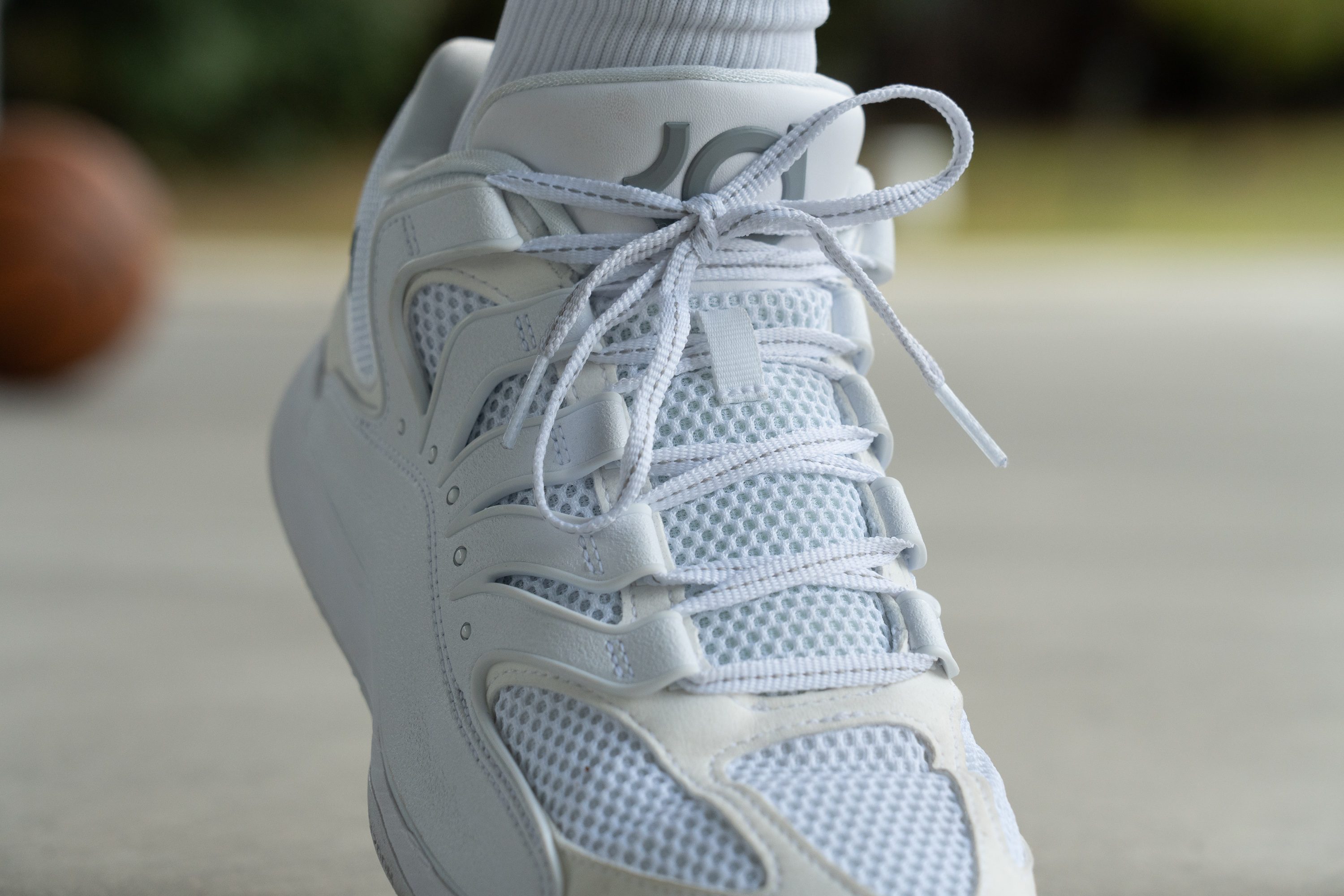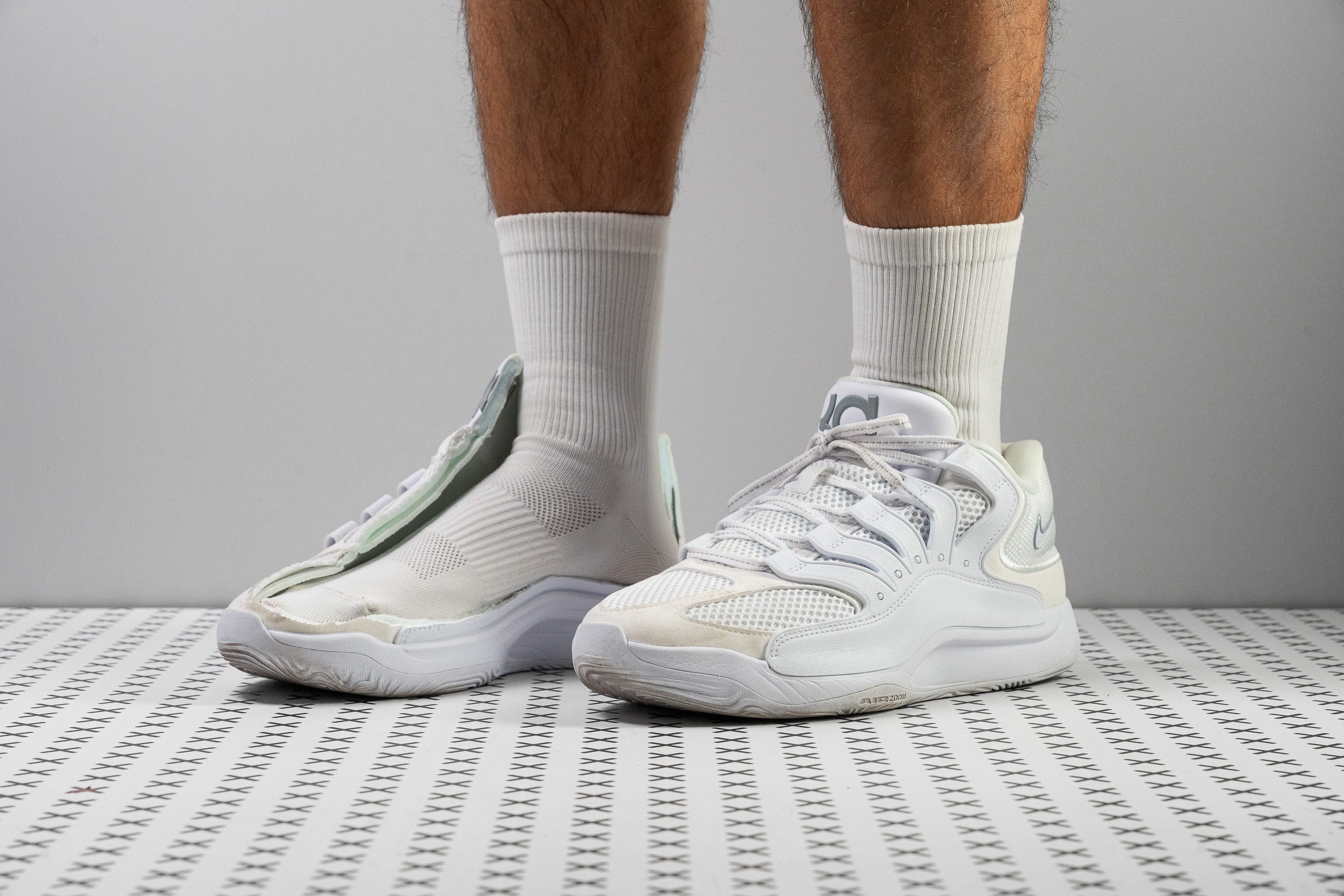Our verdict
- Top pick in best basketball shoes
- Top pick in best outdoor basketball shoes
Pros
- Excellent shock absorption
- Propulsive energy return in the forefoot
- Superb outsole traction
- Solid ankle support and lateral stability
- Secure lockdown and containment
- Comfortable step-in feel
- Good breathability for warm temperatures
- Decent forefoot flexibility
- Promising durability (okay for outdoor courts)
Cons
- Heavier than average
- Not for wide feet
- No major updates from KD 17
Audience verdict
- Top 15% in basketball shoes
- Top 11% in Nike basketball shoes
- Top 17% most popular basketball shoes
Comparison
The most similar basketball shoes compared
+ + Add a shoe | |||||
|---|---|---|---|---|---|
| Audience score | 90 Superb! | 91 Superb! | 90 Superb! | 90 Superb! | |
| Price | £145 | £115 | £140 | £130 | |
| Signature | Kevin Durant | Ja Morant | James Harden | Sabrina Ionescu | |
| Top | Low | Low | Low | Low | |
| Ankle support | ✓ | ✓ | ✓ | ✓ | |
| Weight lab | 14.9 oz / 422g | 11.9 oz / 336g | 14.6 oz / 414g | 12.4 oz / 352g | |
| Lightweight | ✗ | ✓ | ✗ | ✓ | |
| Breathability | Breathable | Breathable | Breathable | Moderate | |
| Outsole durability | Decent | Decent | Good | Good | |
| Drop lab | 4.8 mm | 3.9 mm | 7.4 mm | 5.5 mm | |
| Heel stack lab | 26.7 mm | 26.1 mm | 27.7 mm | 26.1 mm | |
| Forefoot | 21.9 mm | 22.2 mm | 20.3 mm | 20.6 mm | |
| Size | True to size | Slightly small | True to size | Slightly small | |
| Midsole softness | Balanced | Firm | Balanced | Soft | |
| Stiffness | Moderate | Moderate | Stiff | Flexible | |
| Torsional rigidity | Moderate | Moderate | Moderate | Moderate | |
| Heel counter stiffness | Moderate | Moderate | Flexible | Stiff | |
| Width / fit | Medium | Narrow | Narrow | Medium | |
| Toebox width | Medium | Medium | Narrow | Medium | |
| Midsole width - forefoot | Average | Narrow | Narrow | Average | |
| Midsole width - heel | Average | Average | Average | Average | |
| Heel padding durability | Good | Decent | Decent | Good | |
| Toebox durability | Decent | Decent | Decent | Decent | |
| Insole thickness | Average | Average | Average | Average | |
| Outsole hardness | - | Average | Average | - | |
| Outsole thickness | Average | Average | Average | Average | |
| Heel tab | None | None | Finger loop | None | |
| Ranking | #8 Top 15% | #3 Top 6% | #7 Top 13% | #10 Top 19% | |
| Popularity | #9 Top 17% | #8 Top 15% | #6 Top 11% | #15 Top 28% |
Who should buy
The Nike KD 18 offers a winning combination for players in search of the following:
- an adequately priced signature shoe with excellent all-around performance
- a hoop shoe that balances great cushioning and bounce with stability and ankle support
- an extra grippy outsole for both hardwood and blacktop
- a breathable shoe for hooping in warm weather
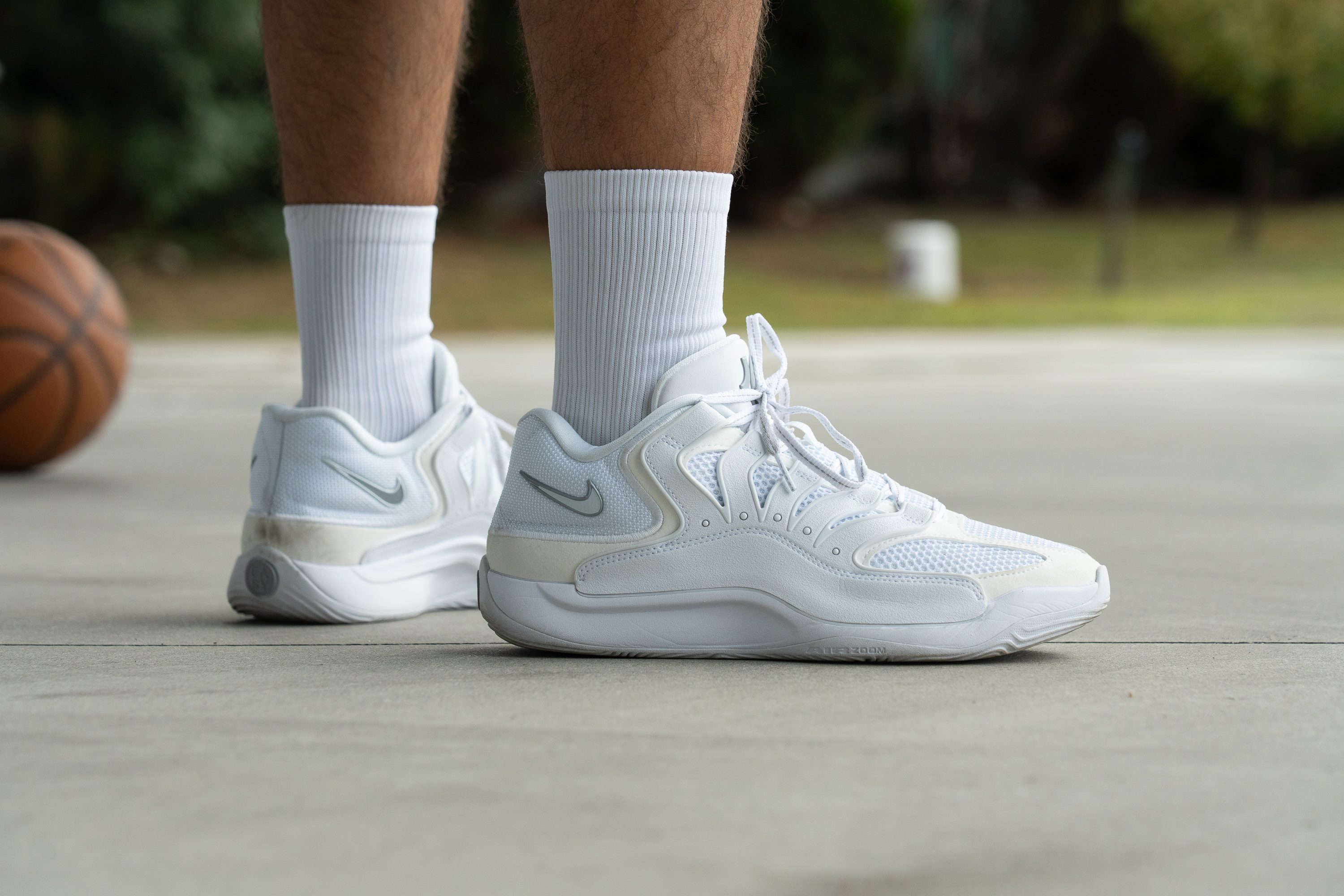
Who should NOT buy
Players with wide feet and those who found the previous KD 17's fit too restricting were left wishing for more space in the KD 18.
For a more accommodating fit, try New Balance shoes like the TWO WXY V5 or the Fresh Foam BB v2.
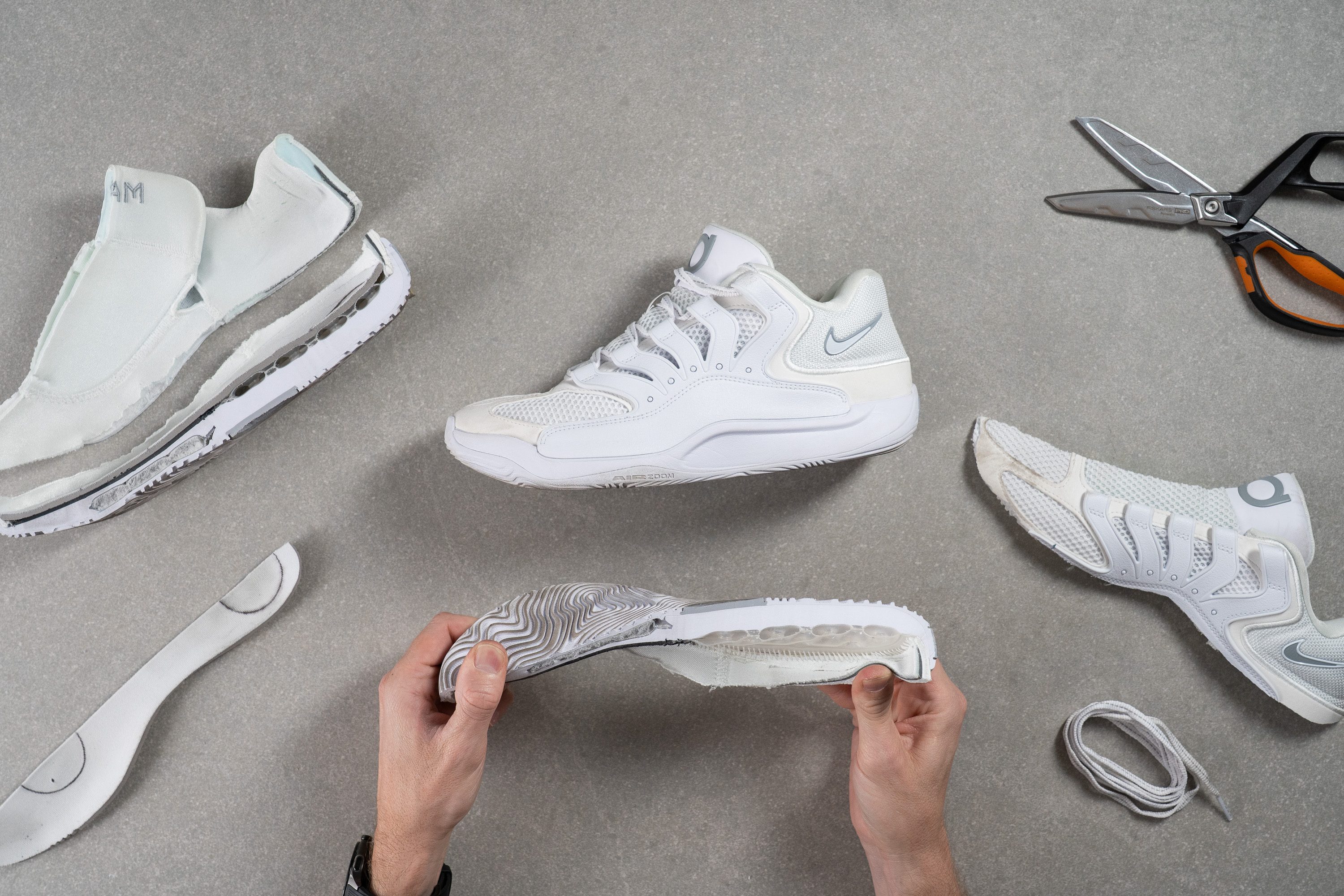
Cushioning
Shock absorption
The Nike KD 18 inherits the KD 17's cushioning setup one-to-one: a full-length Cuslon foam layer, a long Air strobel under the heel and midfoot, a large bottom-loaded Air Zoom unit in the forefoot, and a top-loaded plastic shank on top of it.
Some call it laziness, others call it consistency, but our shock absorption tests proved yet again that this configuration just works! We recorded above-average measurements in both the shoe's heel (115 SA) and the forefoot (90 SA), making it a great option for long matches and practises, heavier players, and hoopers with joint concerns.
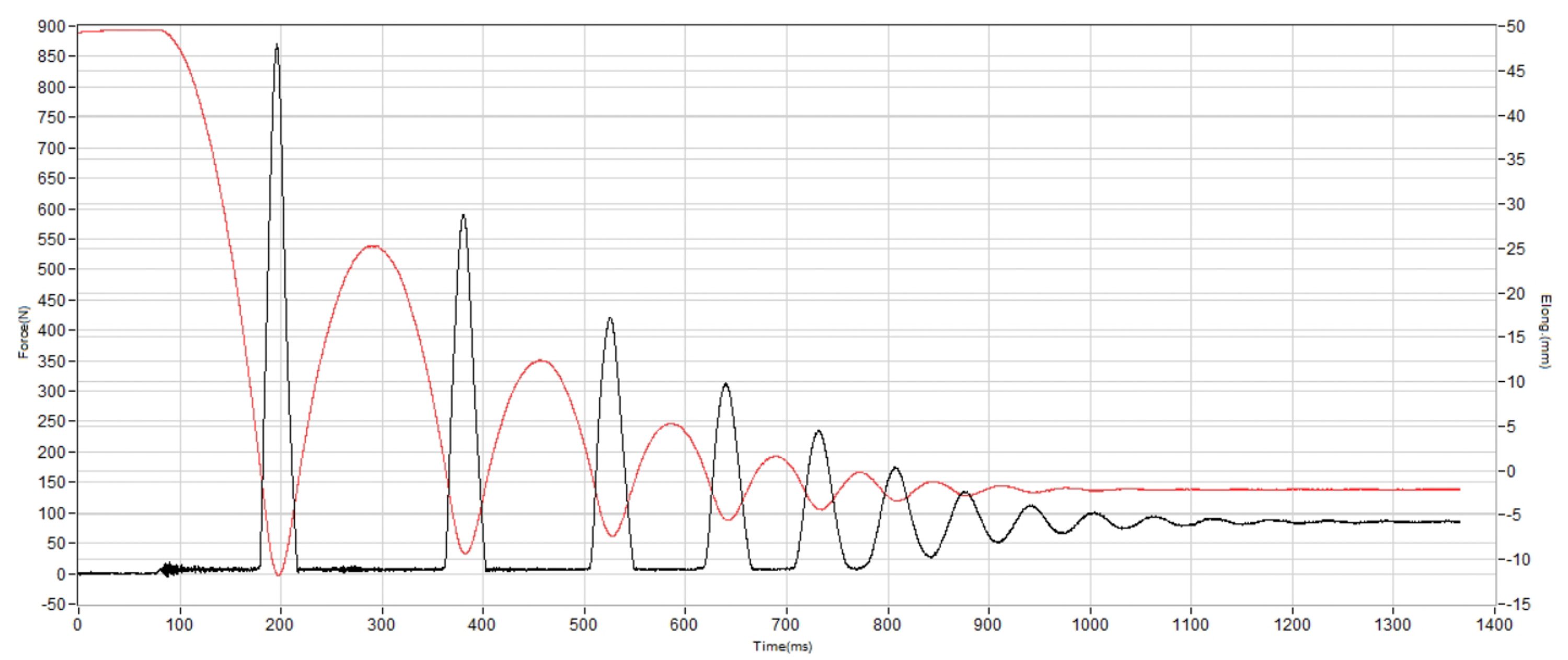
| KD 18 | 115 SA |
| Average | 103 SA |
Energy return
If you owned the KD 17, you can expect the same forefoot propulsiveness in the KD 18. Or as Nike puts it, a 'snappy pop.'
With its Air Zoom and plastic shank combo, this KD shoe reaches some of the highest energy return scores of 72.7% in the forefoot! That's on par with the Nike LeBron 23, by the way! You get to enjoy that added pop for first steps, jump shots, and directional bursts.
The heel, on the other hand, is more down-to-earth with a low-rebound score of only 56.4%. But at least it's the same as the category average. The shoe's rearfoot Air strobel is more about comfort and cushioning than it is about explosiveness.
| KD 18 | 72.7% |
| Average | 62.0% |
Heel stack
Even though it's loaded with multiple cushioning technologies, the Nike KD 18 manages to keep them all under a moderate stack height.
Our calliper measured the shoe's heel stack at 26.7 mm, which is slightly below the category average.
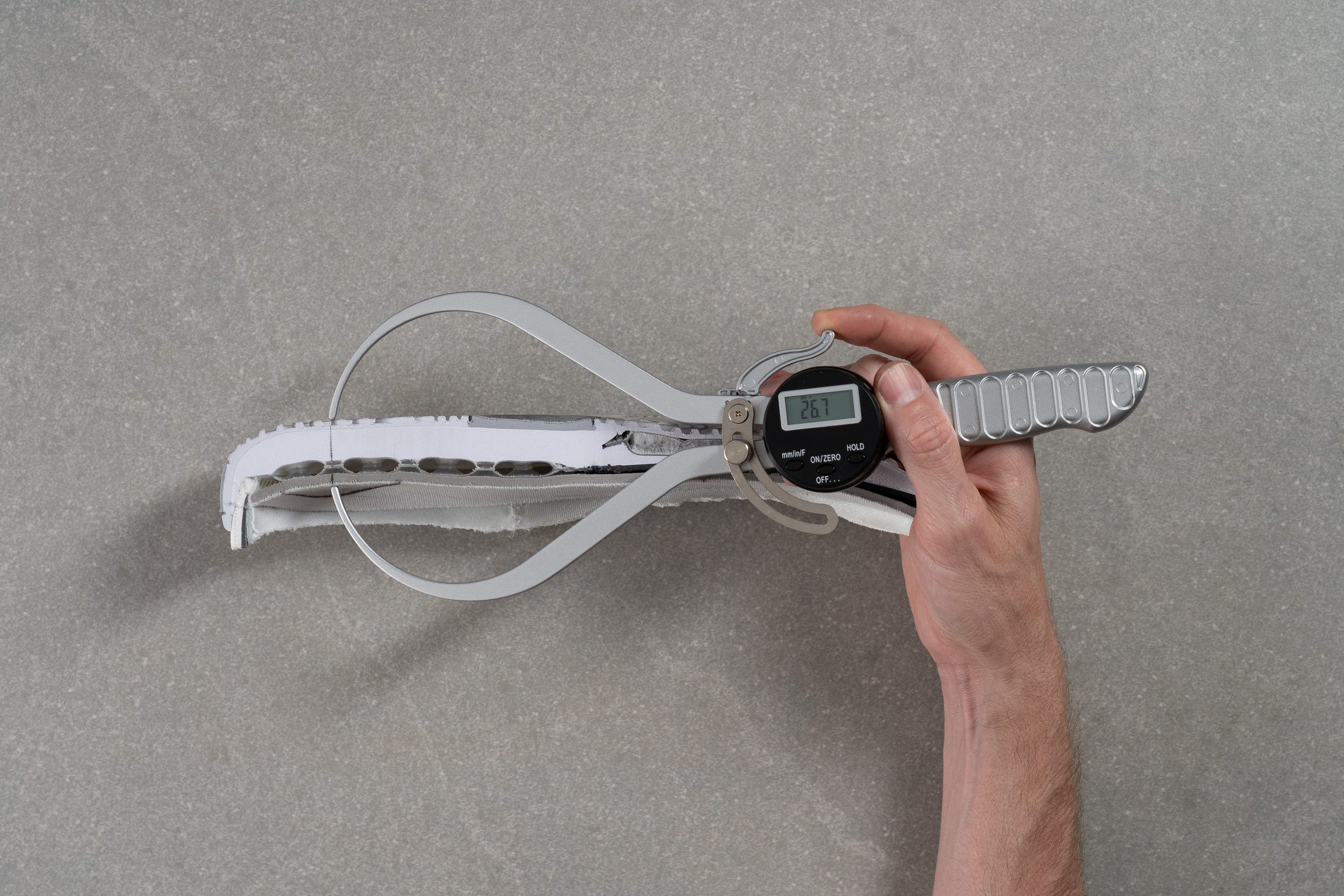
| KD 18 | 26.7 mm |
| Average | 28.8 mm |
Forefoot stack
The shoe's forefoot stack also proved to be moderate and equal to the average at 21.9 mm.
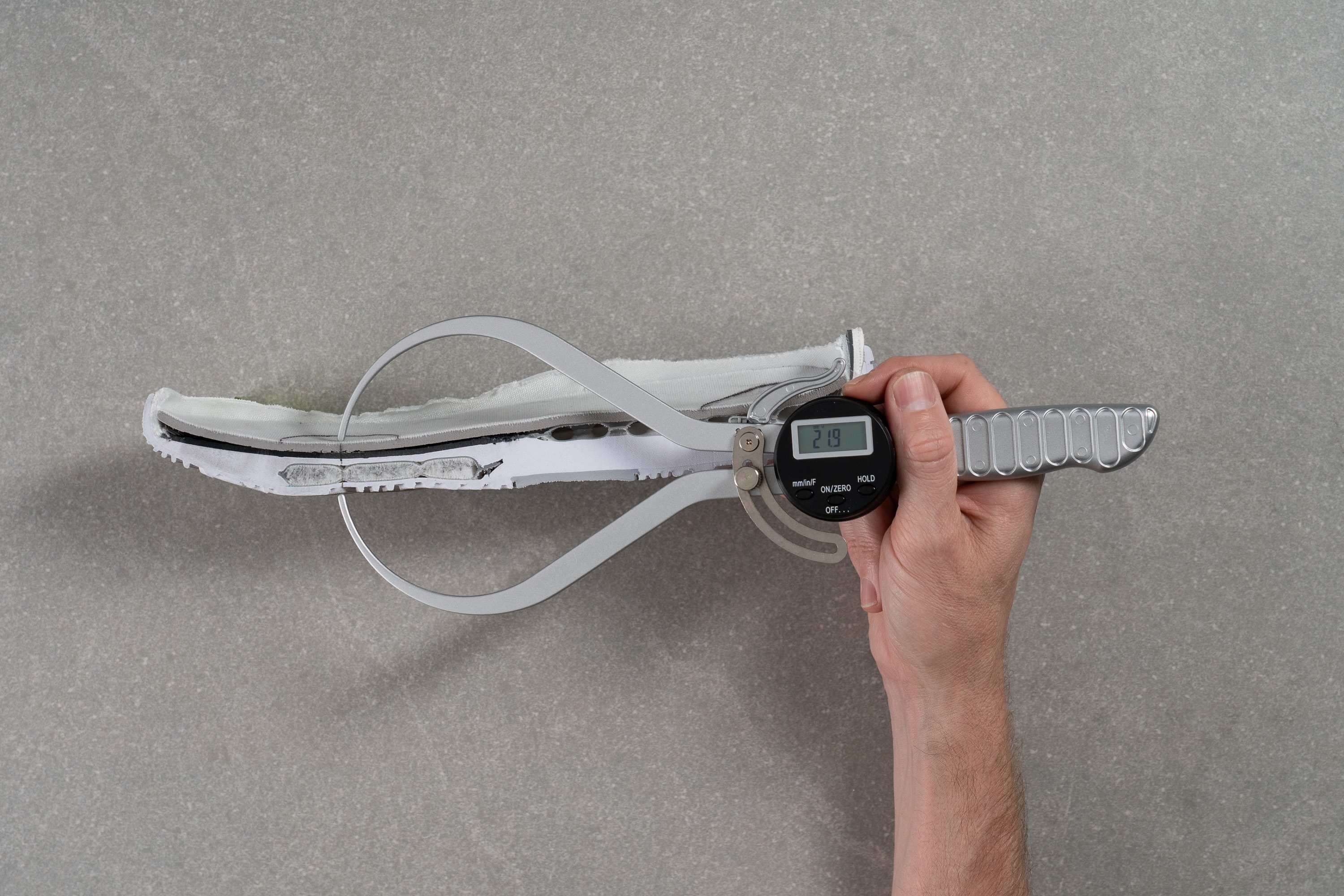
| KD 18 | 21.9 mm |
| Average | 21.4 mm |
Drop
Seasoned players may notice that the KD 18 keeps the foot adequately planted and grounded thanks to its below-average drop of 4.8 mm. In this offset, the heel sits lower and is almost level with the forefoot.
We appreciated this setup in the KD 18 as it helped to balance the KD 18's otherwise cushy and dynamic ride and made it feel more stable and controlled.
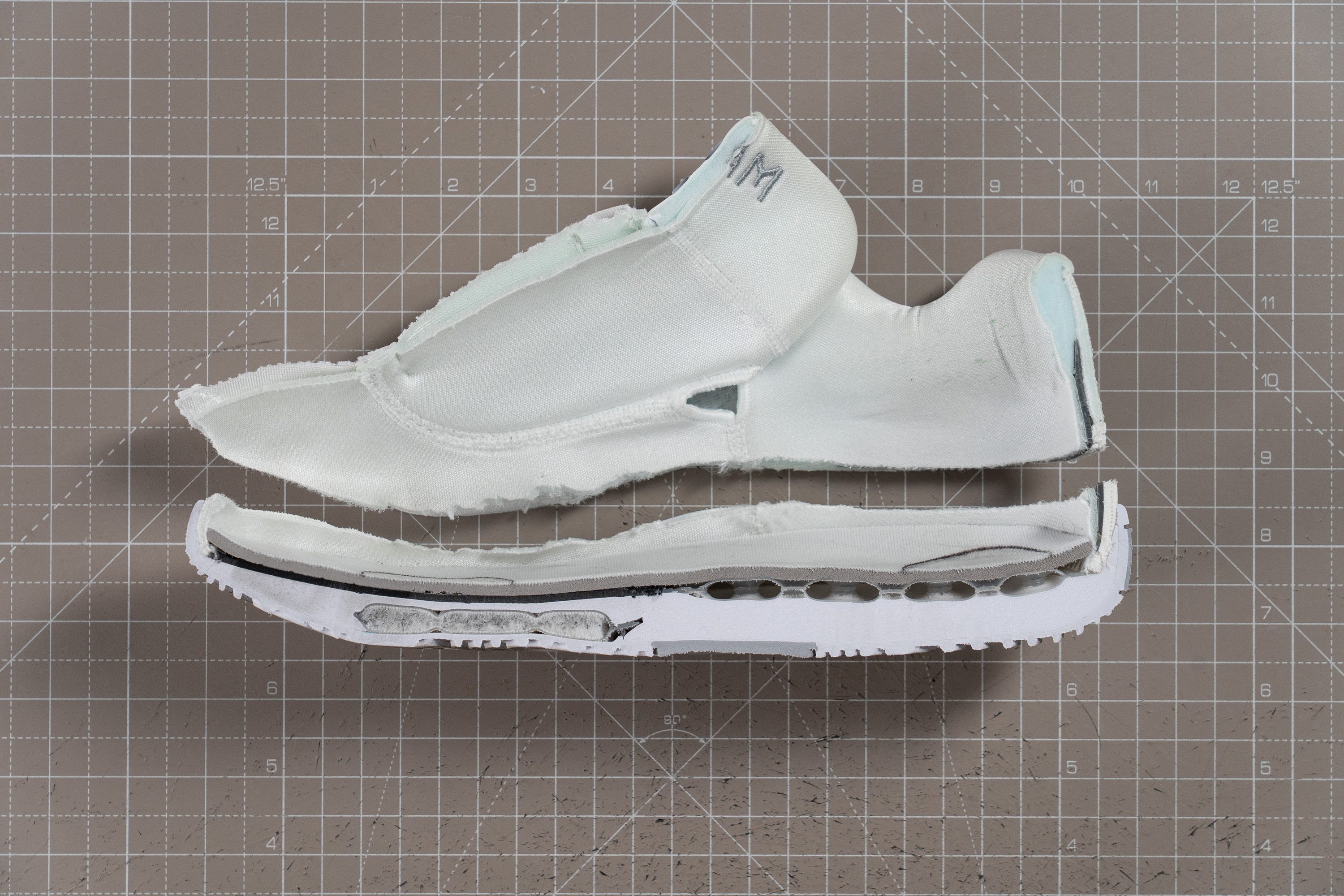
| KD 18 | 4.8 mm |
| Average | 7.4 mm |
Midsole softness
Nike doesn't specify which version of the Cushlon foam it uses for the KD 18, but we strongly suspect that it's the same blend as in its predecessor.
Not only because of similar shock absorption and energy return results, but also because the midsole softness proved to be nearly identical in the two shoes - 23.1 HA in the KD 17 and 24.5 HA in the KD 18.
Both compounds made the midsoles feel cosy and forgiving, but not overly soft or mushy. In fact, the durometer reading of 24.5 HA falls into the medium-soft (or balanced) range of basketball shoe cushioning by our standards.
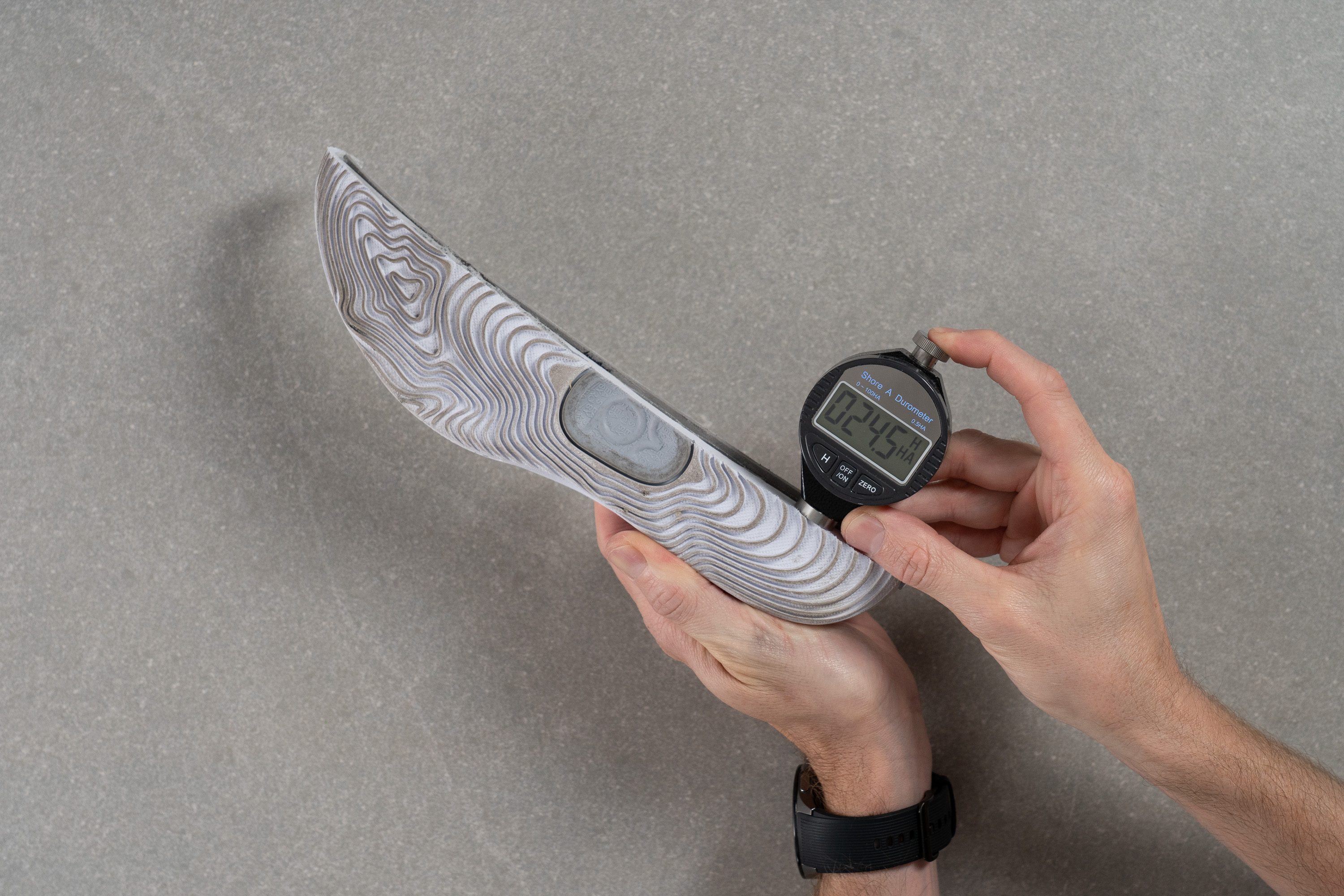
| KD 18 | 24.5 HA |
| Average | 24.4 HA |
Size and fit
Size
Nike KD 18 fits true to size (42 votes).
Width / Fit
Much like its previous iteration, the Nike KD 18 offers a pretty snug fit for a medium-width shoe.
Our gel mould confirmed that it indeed comes very close to the narrow side of the fit spectrum.
At 91.7 mm in the widest part of the ball of the foot area, it is a bit narrower than most other basketball shoes we tested in the same size (men's US 9) and width (D medium).
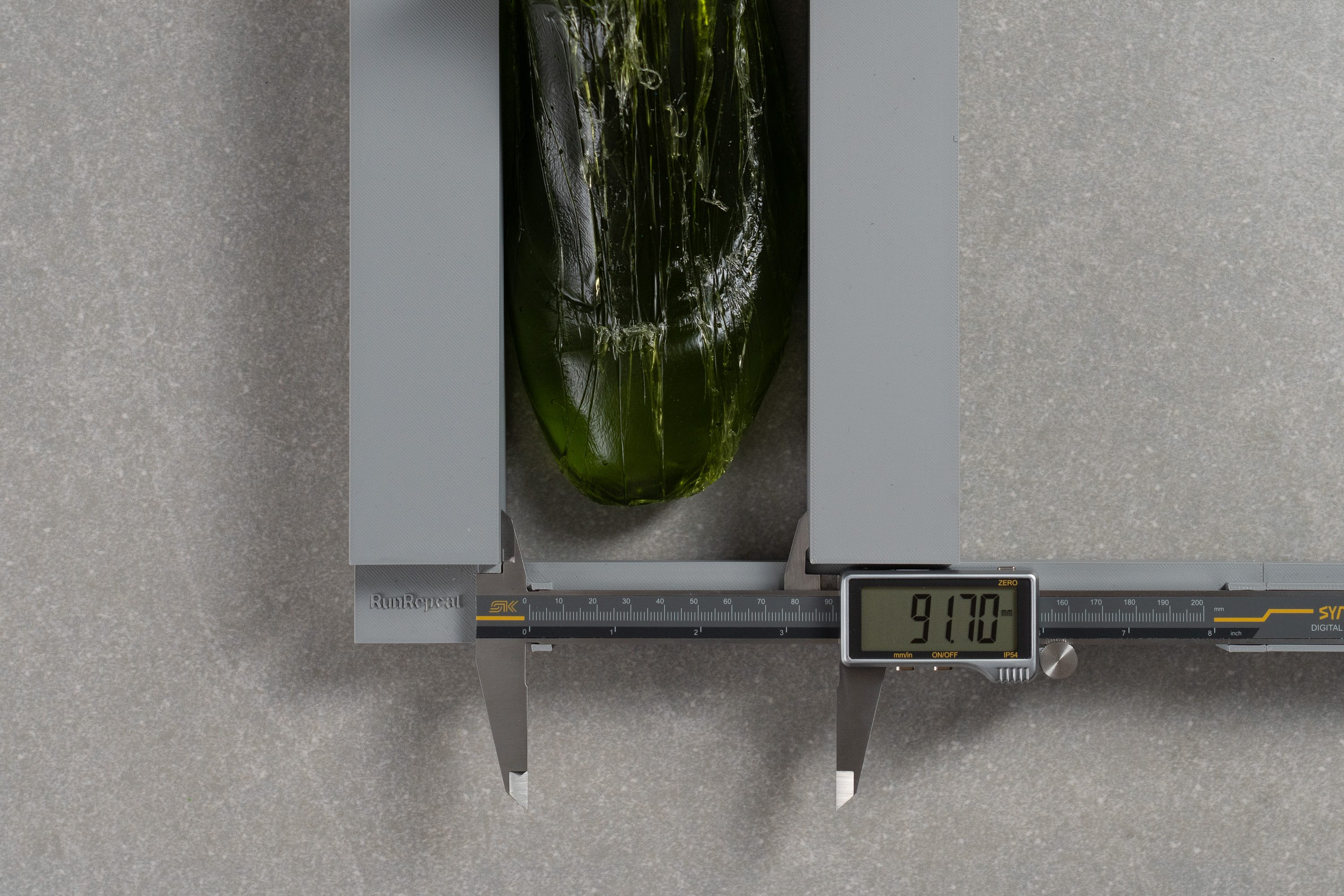
| KD 18 | 91.7 mm |
| Average | 92.7 mm |
Toebox width
But luckily, the KD 18's new mesh upper material helped to relax the fit a little bit in the toebox!
Instead of the previous 65.3 mm, our calliper now showed 68.1 mm of width in the big toe area, making the KD 18 a touch more accommodating (more like the average hoop shoe).
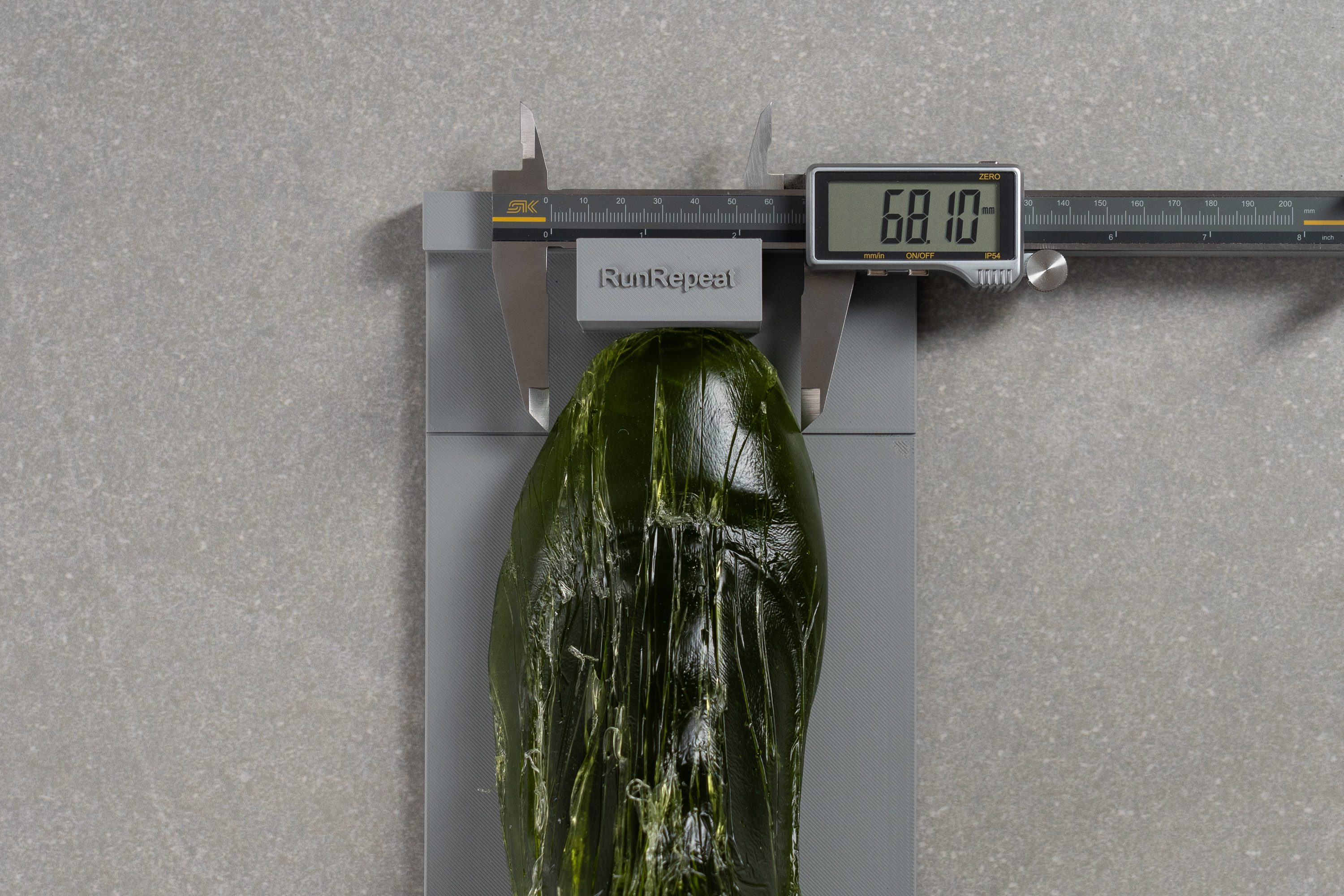
| KD 18 | 68.1 mm |
| Average | 69.3 mm |
Toebox height
The KD 18's vertical space also turned out to be way more spacious as its new upper lifted the toebox height by almost 5 mm! Our calliper showed a very generous reading of 28.2 mm.
This is great news for hoopers with problematic toenails and toe deformities.
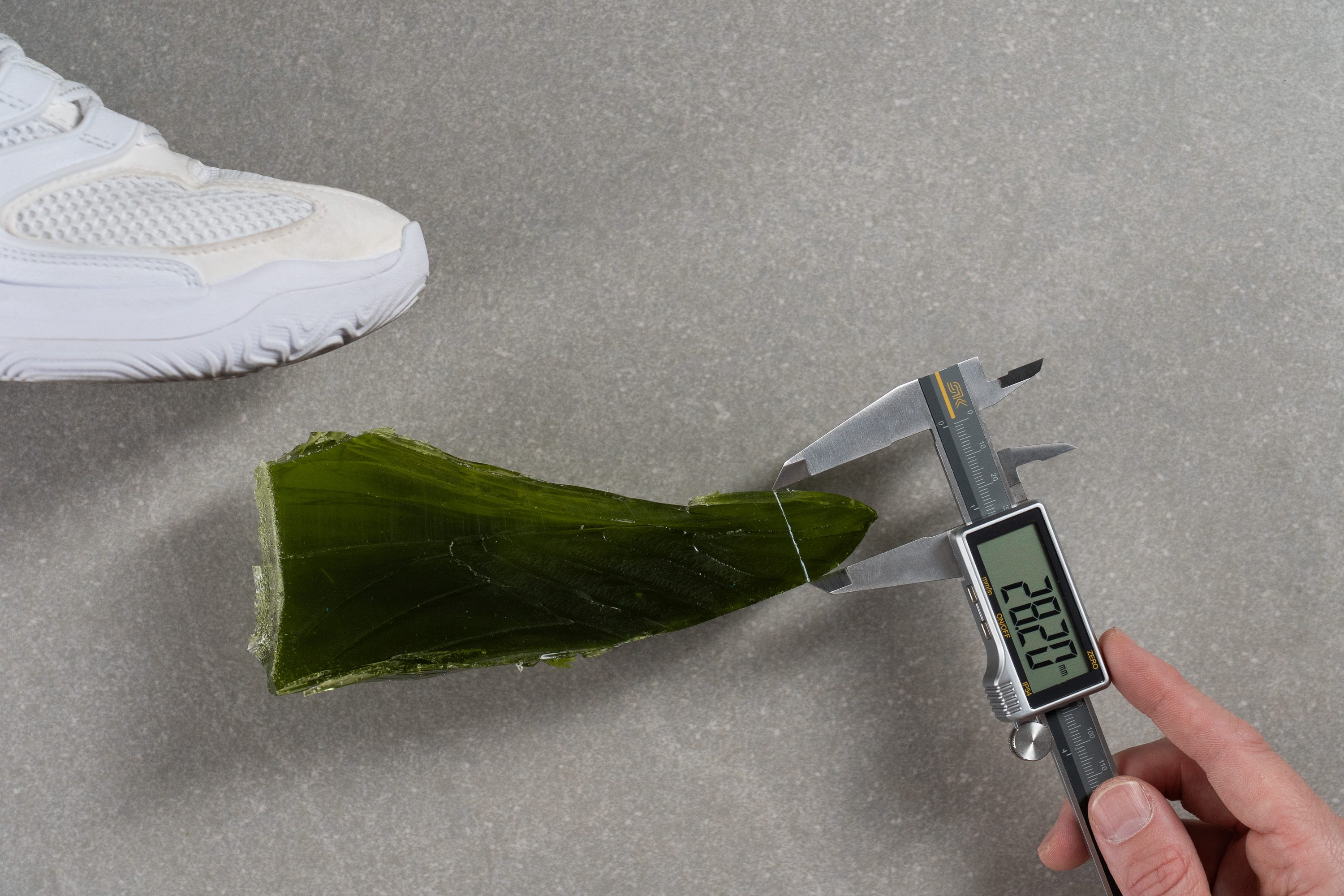
| KD 18 | 28.2 mm |
| Average | 23.4 mm |
Traction / Grip
Forefoot traction
Even though the KD 18's outsole design looks identical to that of the KD 17, something must have been tweaked in the new shoe's rubber blend.
Imitating a forefoot stop on professional hardwood, our machine recorded a sky-high friction coefficient of 0.89! This is notably higher compared to the KD 17's (0.74) and to the category average.
This is a super tacky bite for quick cuts, sprints, drives, and dribbles.
| KD 18 | 0.89 |
| Average | 0.75 |
Outsole design
The KD 18 features the same topographic-style tread pattern as its predecessor. We found these wavy lines to be equally effective on indoor hardwood and outdoor blacktop.
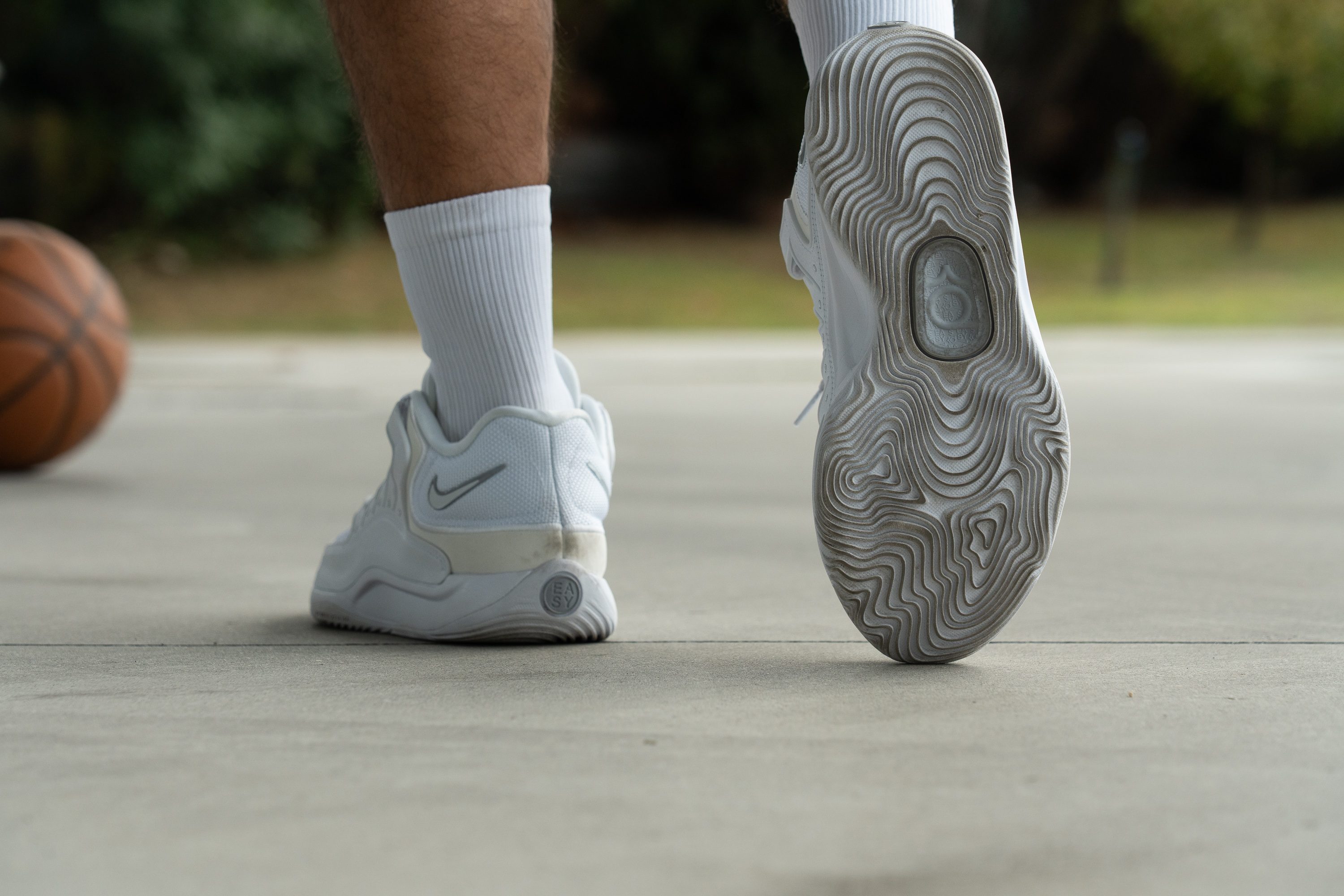
Flexibility / Stiffness
A plastic shank in the KD 18's forefoot barely affects flexibility.
The shoe conforms to the natural bending of the foot without a problem, and there are no stiff upper overlays to resist it either.
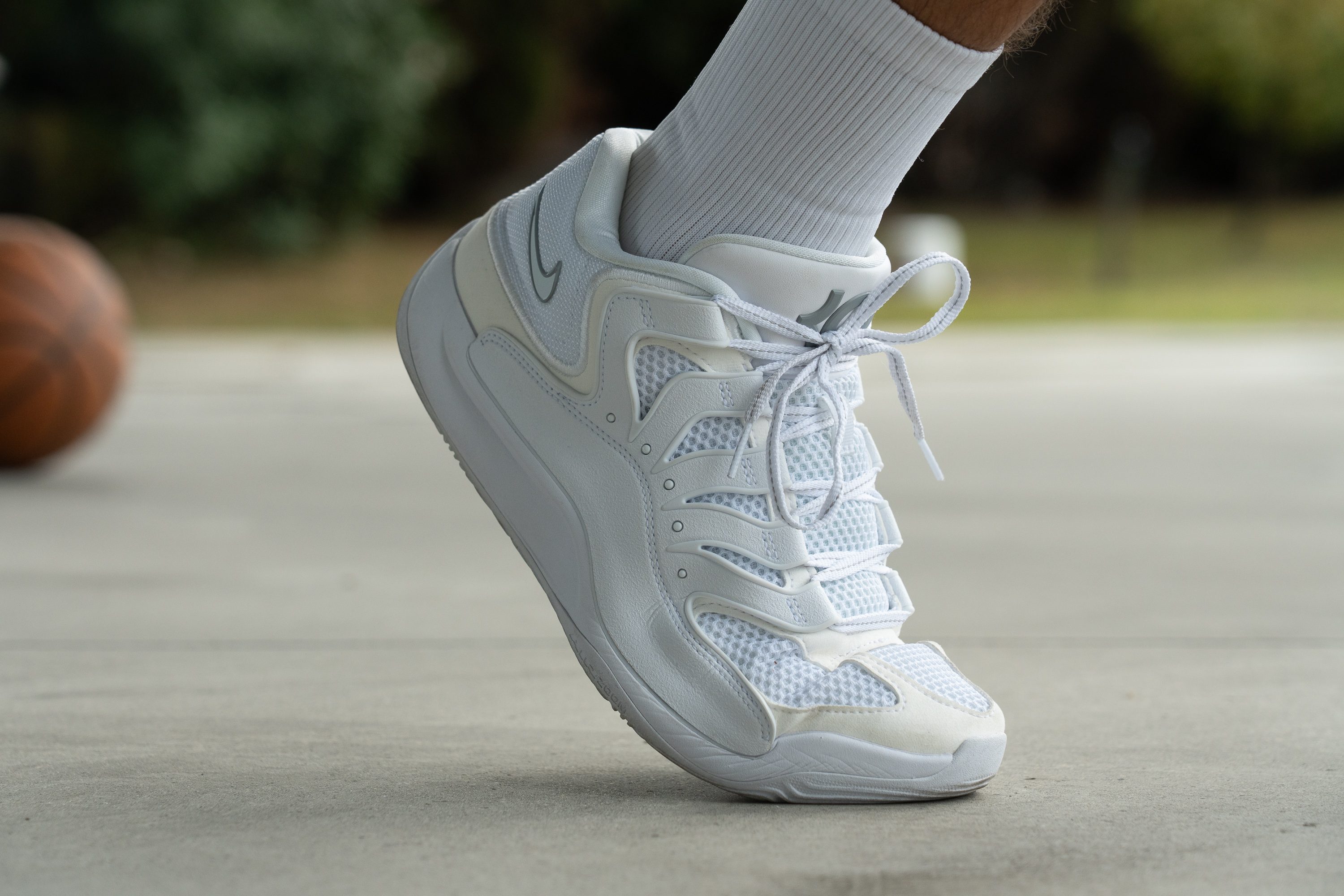
Our shoe stiffness test confirmed these observations with a standard reading of 20.1N. This is a normal amount of force required to bend a basketball shoe by 30 degrees.
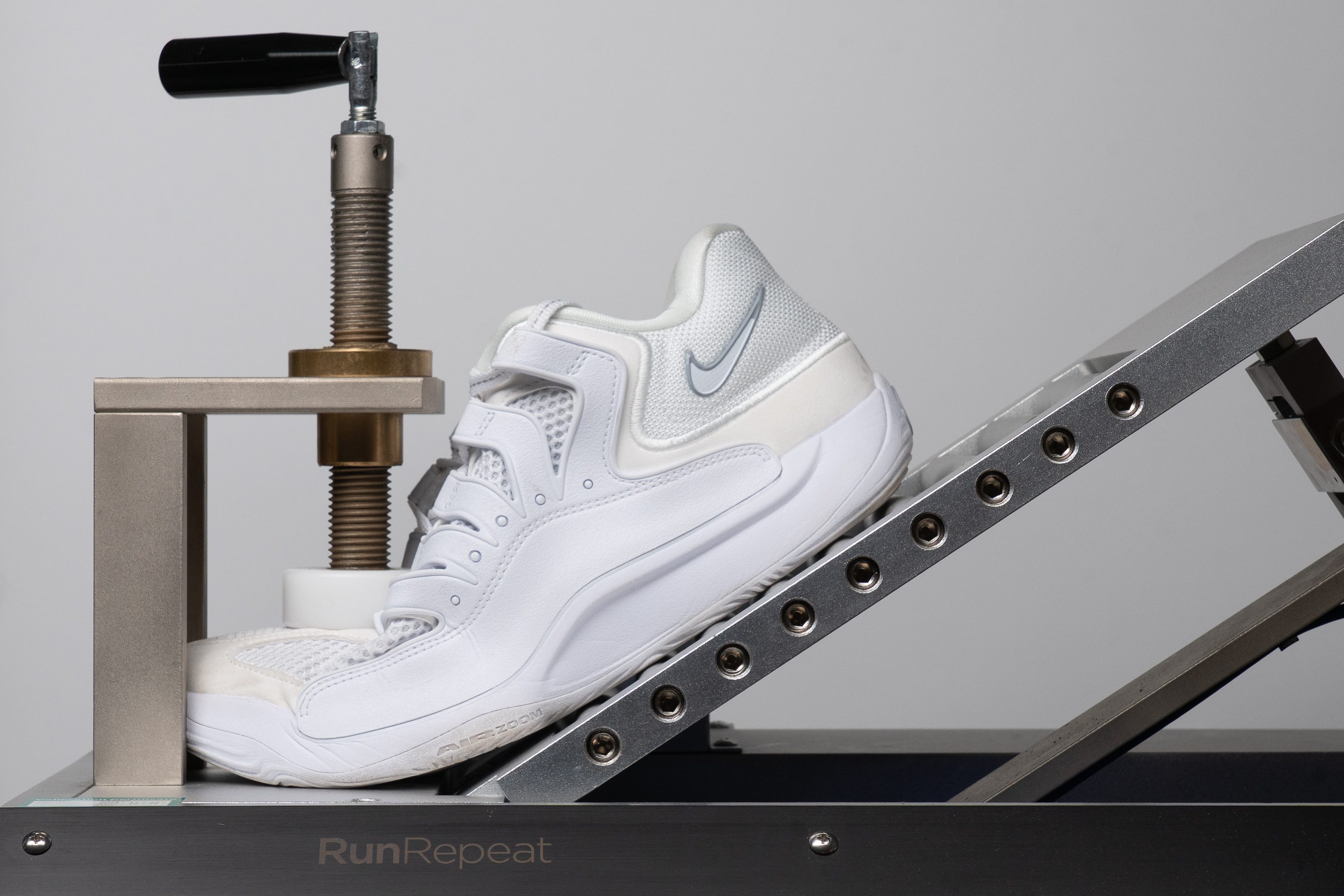
| KD 18 | 20.1N |
| Average | 20.6N |
Weight
We rightfully expected that Nike's design tweaks would make the KD 18 a lighter version, but... they ended up adding an ounce of weight instead?
Weighing both shoes in the same size (men's US 9) and on the same excale, we got 13.8 oz (390g) in the KD 17 and 14.9 oz (422g) in the KD 18! The latter version also happens to be heavier than average now.
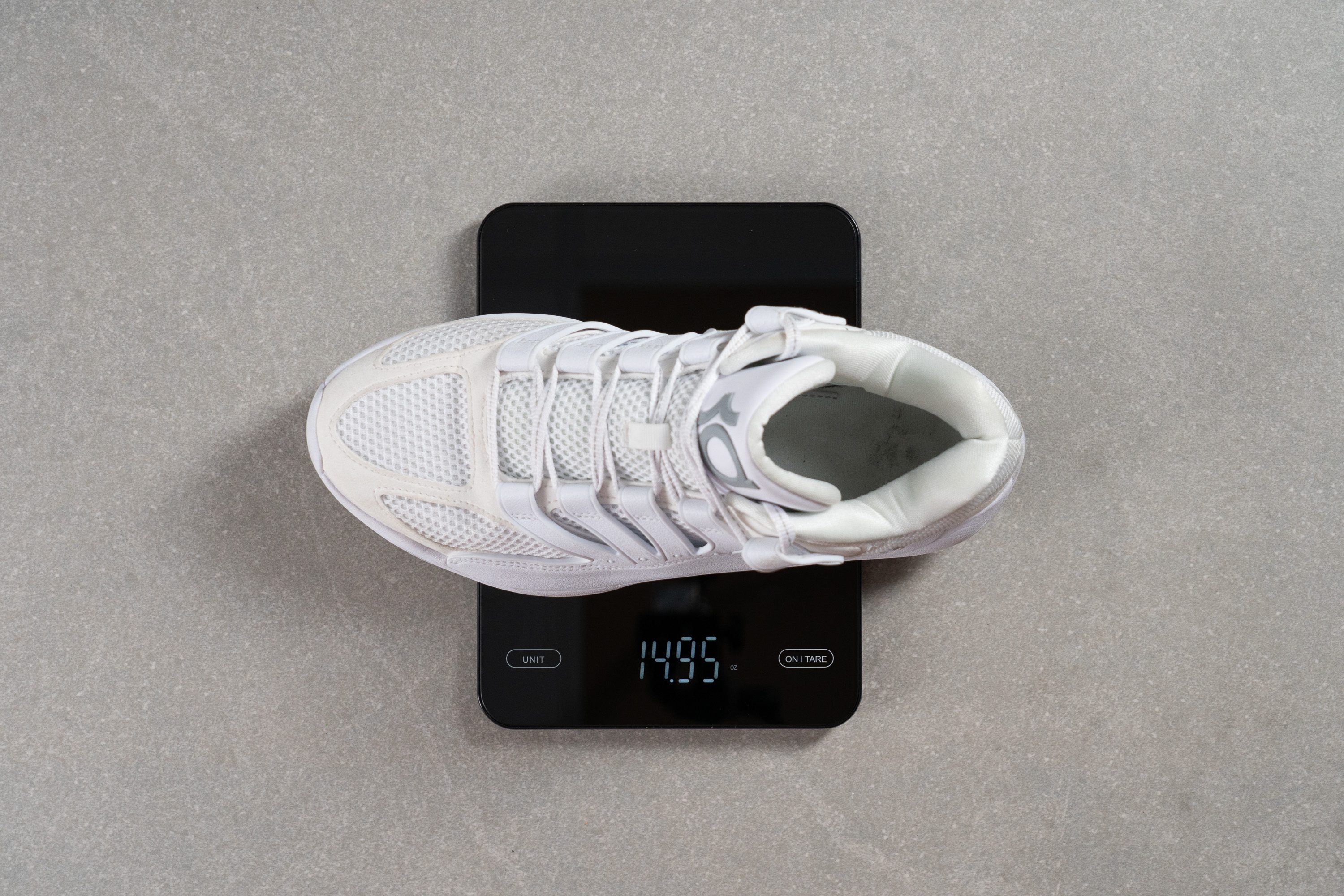
| KD 18 | 14.9 oz (422g) |
| Average | 13.8 oz (390g) |
Breathability
The most evident update in the KD 18 is, of course, the mesh upper with a more open-cell design. As Nike says in their product description, 'we poked holes all over the upper to...add breathability.'
However, taking both KD iterations through our smoke-pumping machine test, we didn't see any major differences in the speed and amount of billows that passed through their toeboxes.
There is no doubt that the KD 18's material is thinner and more transparent to light, though.
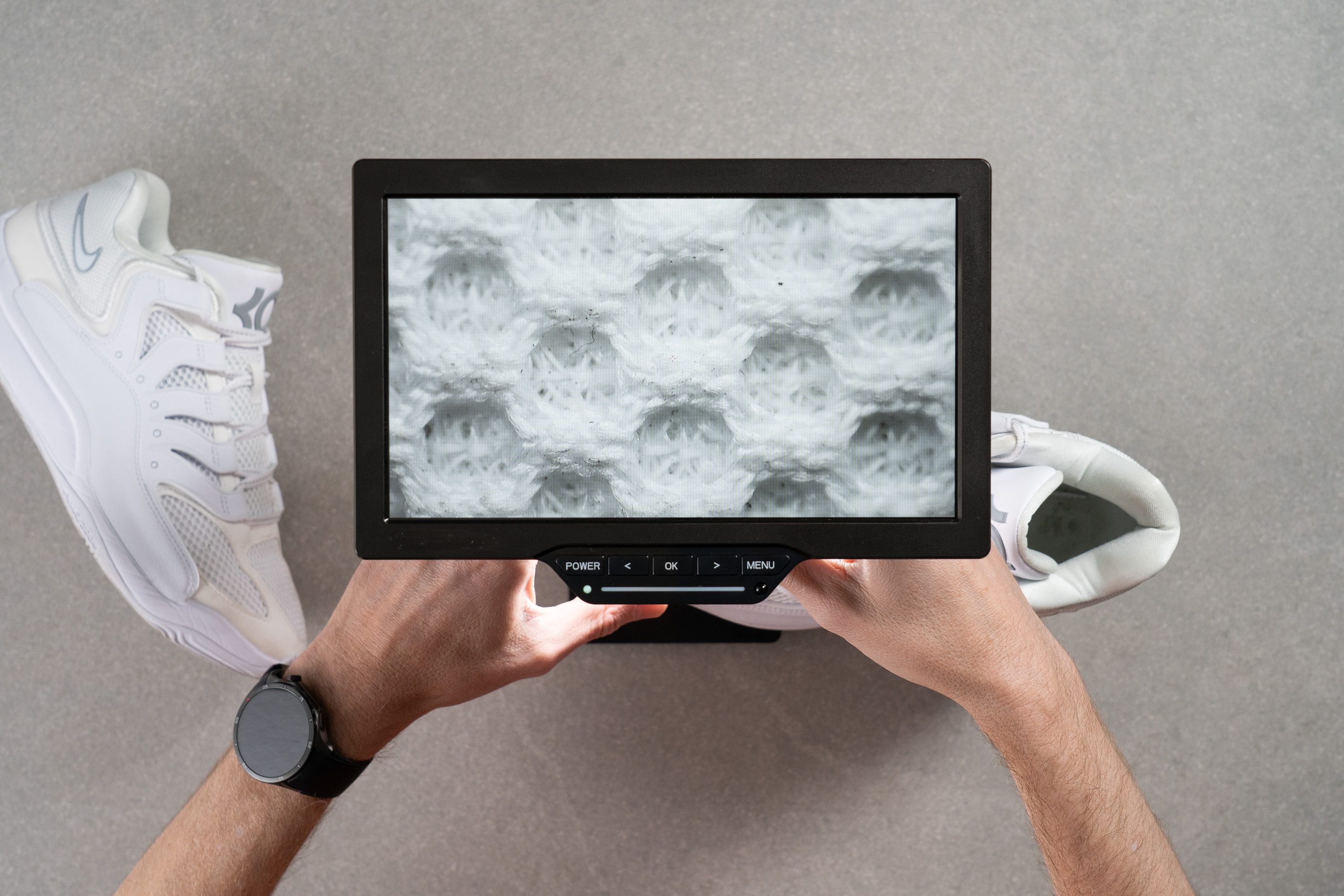
However, taking a closer look at both materials through a microscope, we wouldn't say that the KD 18's ventilation pores are that much more open. The actual difference in breathability is not that big from the KD 17.
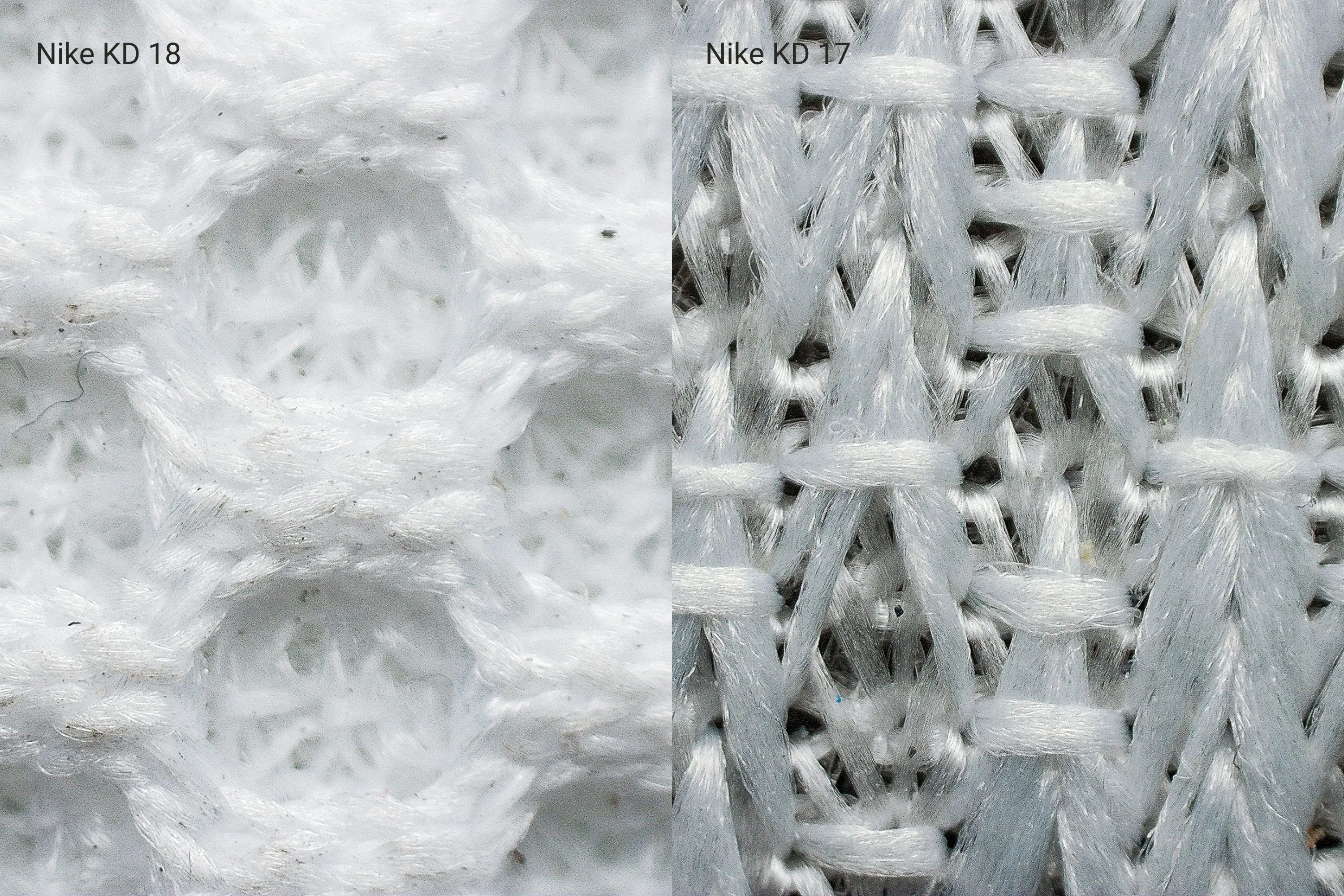
Both shoes got the same breathability score of 4/5, which is great for summer matches and stuffy indoor courts.
| KD 18 | 4 |
| Average | 2.5 |
Stability
Lateral stability test
The shoe's TPU and synthetic leather caging may appear more subtle in the KD 18, but we found that it handles lateral support and midfoot lockdown just as effectively as the previous version!
Not to mention that the base of the shoe retains its solid support and stability through a plastic shank inside and a raised midsole topline on the outside.
Torsional rigidity
Despite its reworked upper, the KD 18 remains as torsionally rigid as before!
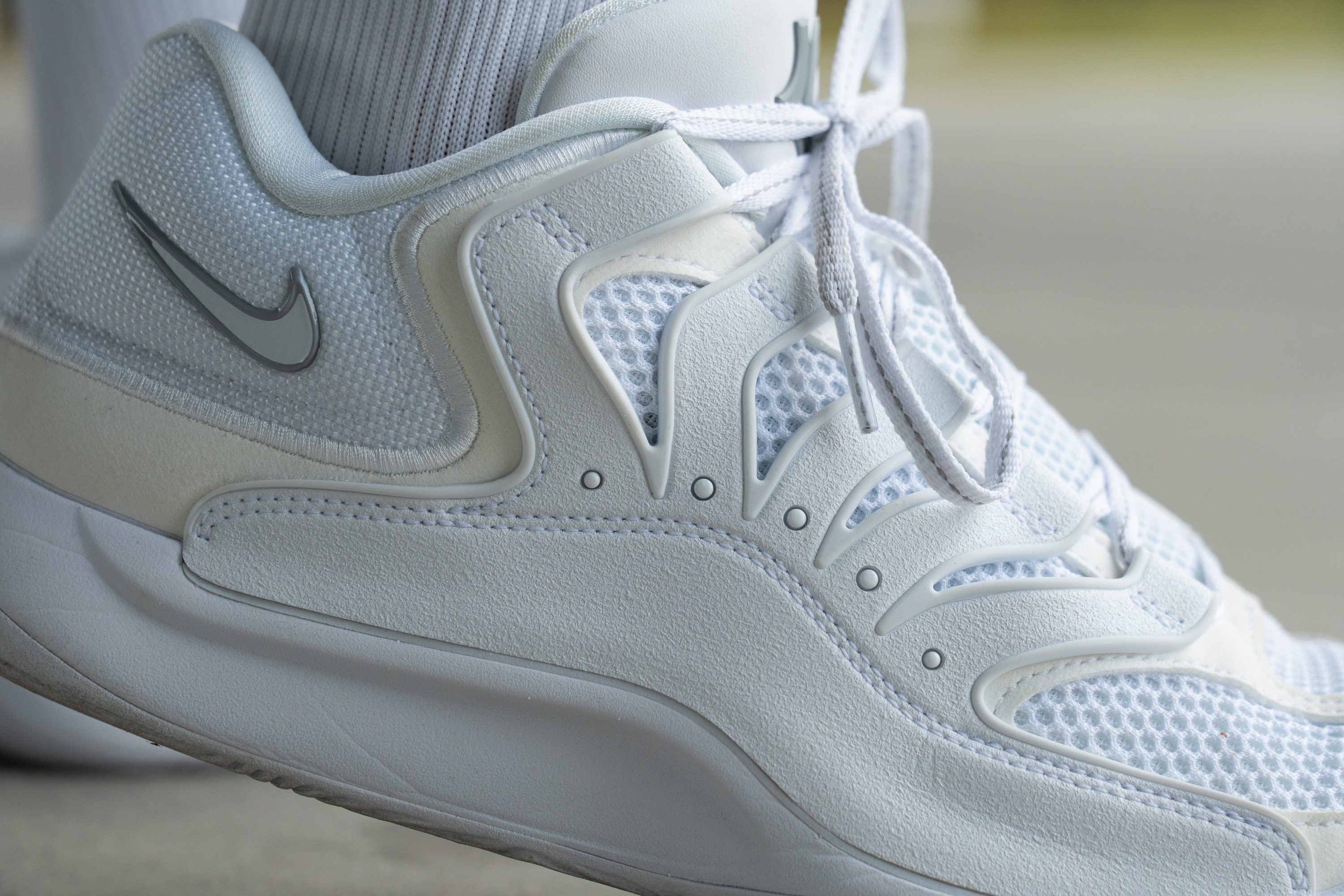
It took considerable effort to twist the shoe even slightly in our manual test, earning the shoe a high stiffness score of 4 out of 5.
This makes the Nike KD 18 more immune to ankle rolls during quick cuts, crossovers, and other forceful lateral movements, making steps more planted and surefooted.
| KD 18 | 4 |
| Average | 4.5 |
Heel counter stiffness
A sturdy heel counter further enhances the shoe's structural stiffness.
Our manual pressure tests showed minimal give in the rearfoot, raising the shoe's stiffness score high yet again to 4/5.
Not only is it stiff, but the shoe's heel counter is also immensely well-padded! The foam wraps around the heel and ankle like a clingy teddy bear that refuses to let go.
| KD 18 | 4 |
| Average | 3.8 |
Midsole width - forefoot
With no changes to the KD 18's outsole design, its forefoot outrigger remains just as wide as before at 116 mm in the widest part of the ball of the foot area.
This is a standard forefoot width for a basketball shoe, offering a good landing area for shuffling in front of the opponent.
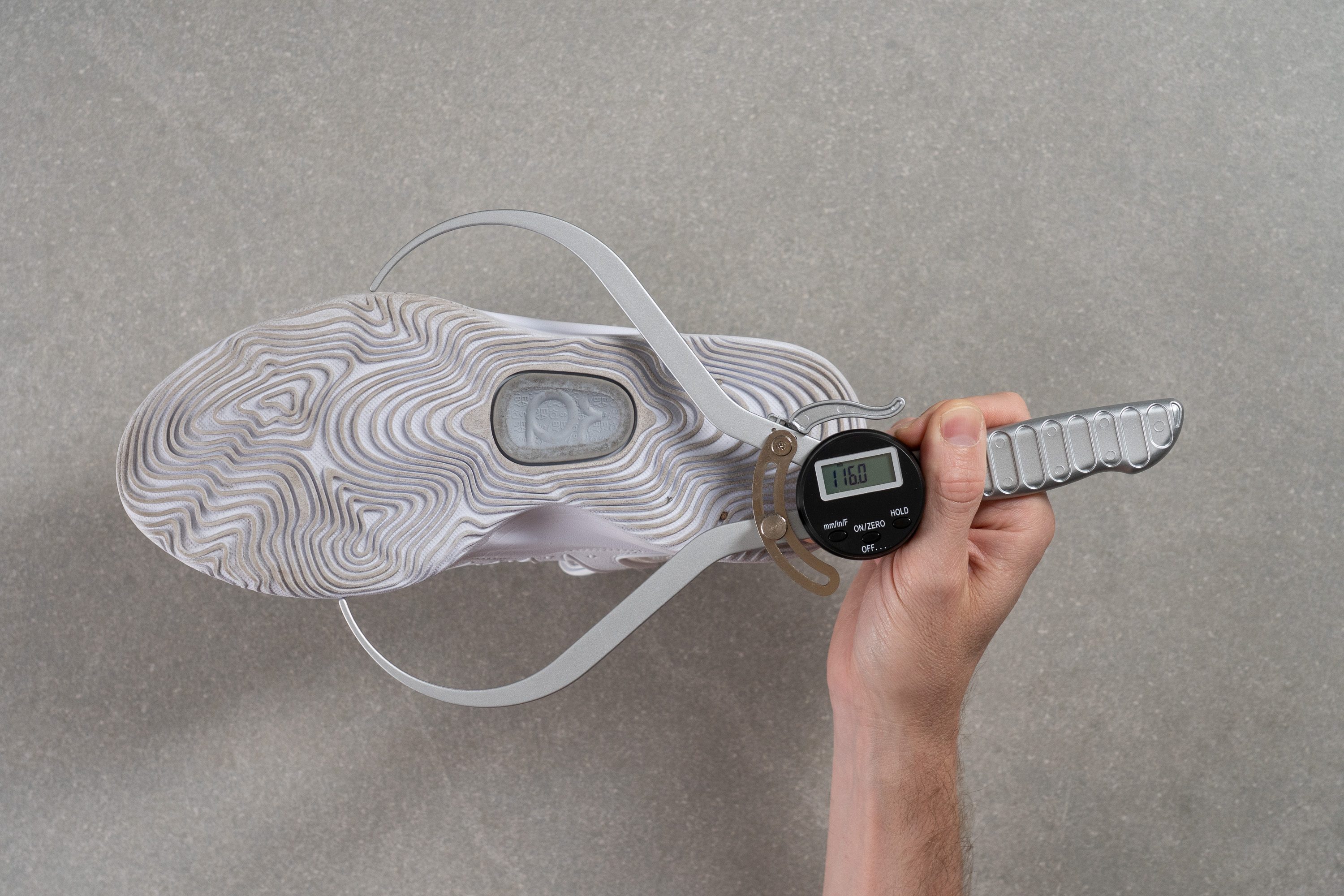
| KD 18 | 116.0 mm |
| Average | 114.8 mm |
Midsole width - heel
The heel, on the other hand, is not particularly wide on the KD 18. Our calliper measured its widest part at 86.7 mm, which is on par with the previous KD shoe.
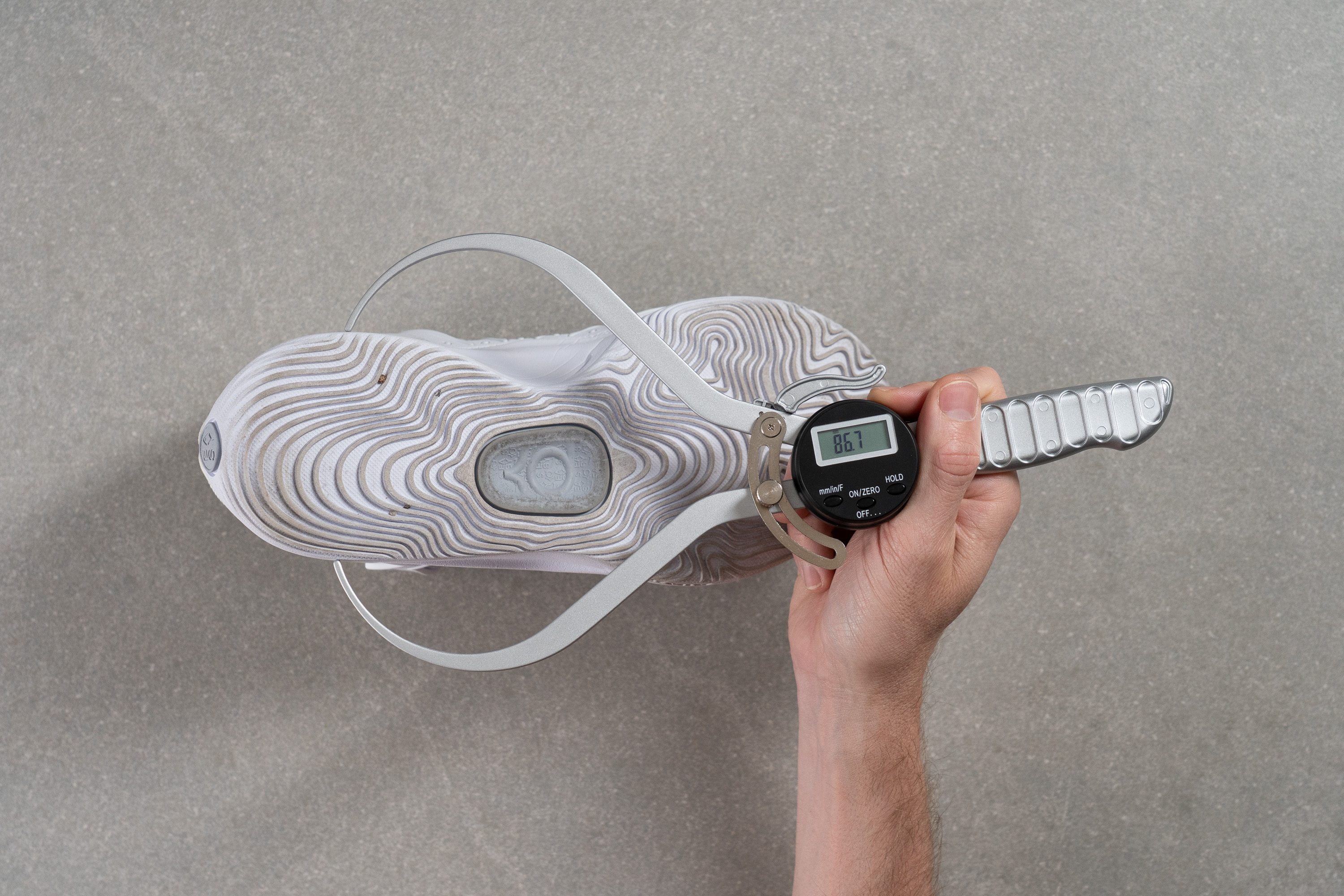
| KD 18 | 86.7 mm |
| Average | 89.7 mm |
Durability
Toebox durability
The KD 18's open-cell mesh didn't look very promising as far as durability is concerned, but we ended up pleasantly surprised.
When the Dremel session was over, we found that the material sustained scuffing only in its topmost layer and didn't even develop a see-through hole! Because of that, we rated this Nike shoe's toebox durability as 3 out of 5.
That's a fair trade-off between breathability and wear resistance.
| KD 18 | 3 |
| Average | 3.7 |
Heel padding durability
Nike also nailed it with the shoe's inner lining, as our Dremel didn't leave any signs of wear and tear on the material! That deserves a maximum heel padding durability score of 5/5.
| KD 18 | 5 |
| Average | 3.7 |
Outsole durability
The shoe's outsole rubber didn't falter either. Having drilled it for 18 seconds at a 10K RPM speed, the dent was merely 1.2 mm deep. This is normal wear for the average hoop shoe in our lab.
| KD 18 | 1.2 mm |
| Average | 1.0 mm |
Outsole thickness
The shoe's outsole thickness also proved to be on par with the average at 4.0 mm.
Overall, the thickness and sturdiness of the KD 18's rubber outsole and its promising tread pattern convinced us to recommend this Nike shoe for outdoor use as well.
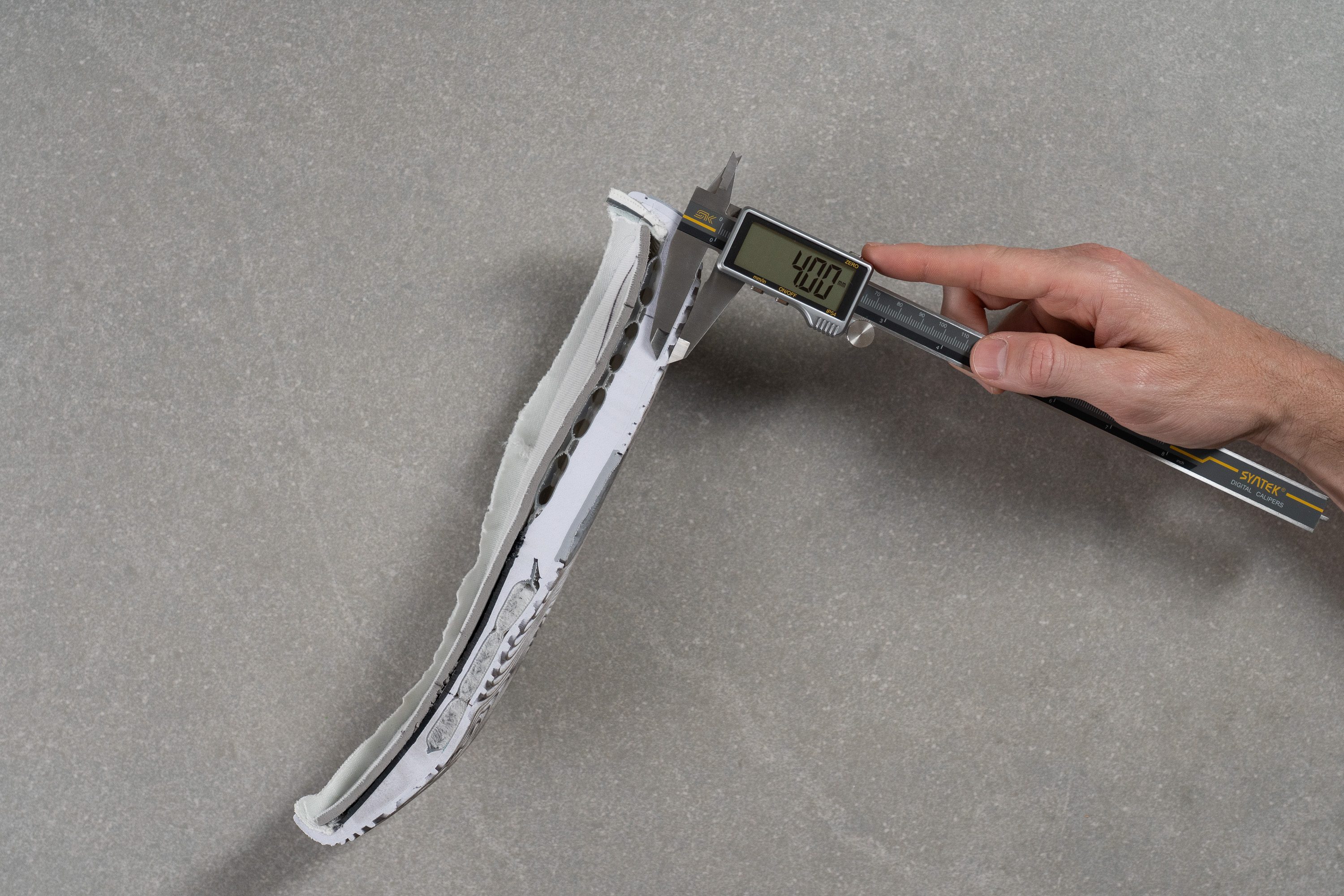
| KD 18 | 4.0 mm |
| Average | 4.0 mm |
Misc
Insole thickness
The stock insole of the KD 18 is rather basic with a regular thickness of 3.9 mm in the heel.
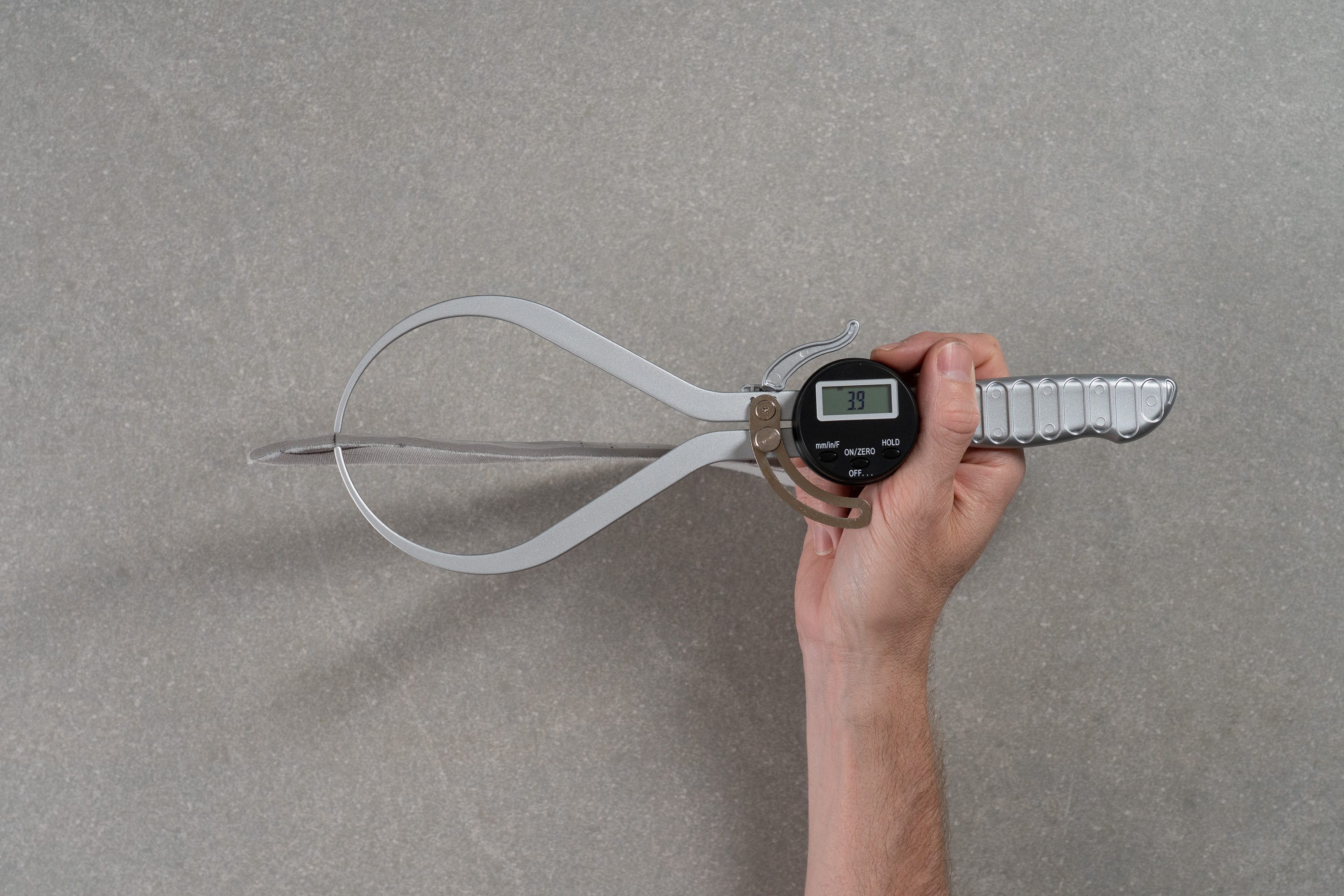
| KD 18 | 3.9 mm |
| Average | 4.9 mm |
Removable insole
It is easily removable and can be replaced with a custom orthotic if needed. The shoe's ample internal space and generous toebox height allow for that.
You can also pull out the insole to take a sneak peek at the shoe's Air stroblel if you're curious.
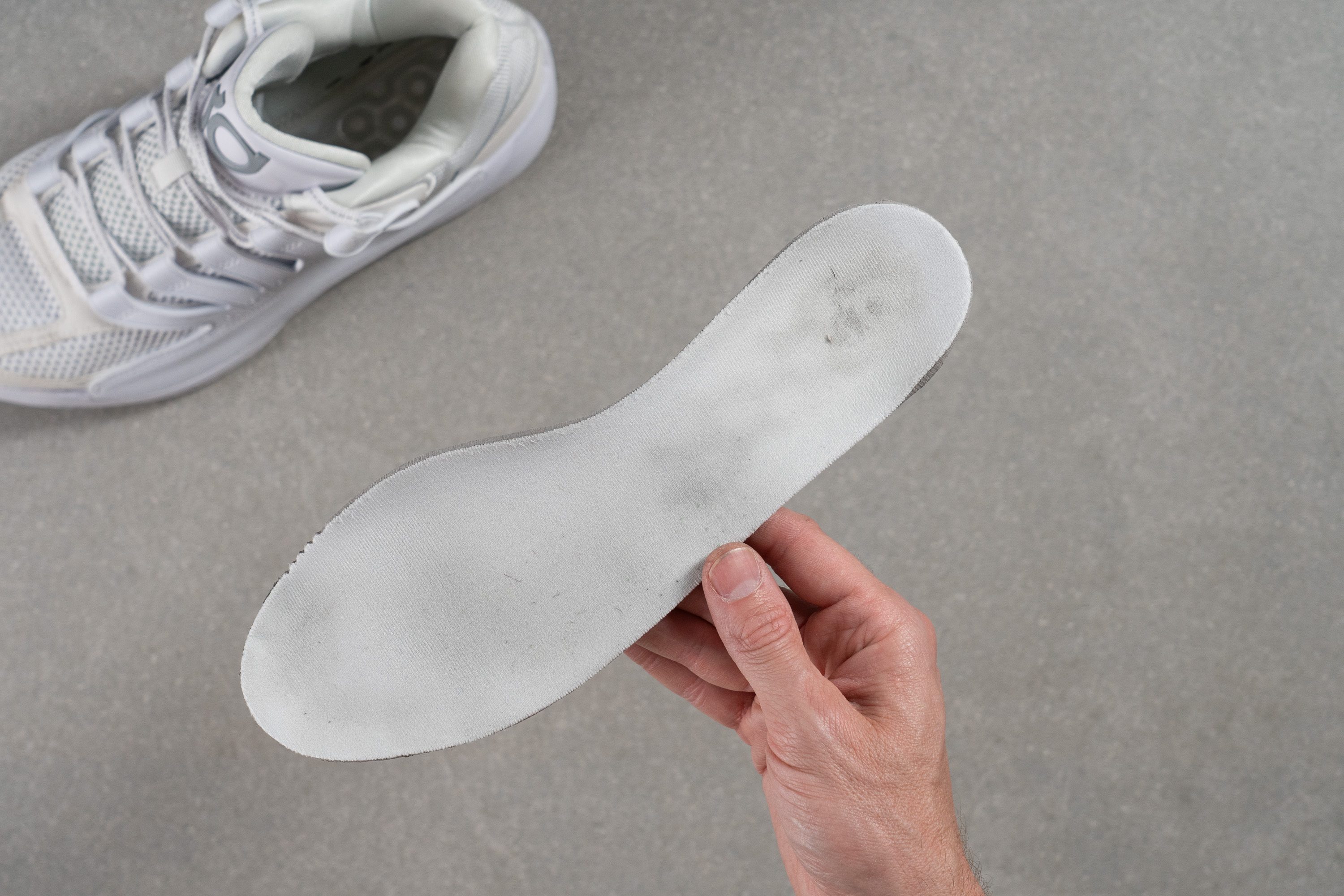
| KD 18 | Yes |
Tongue padding
Examining the Nike KD 18's half-cut upper, we found it to be well-padded without overdoing it.
Its tongue thickness showed a standard thickness of 8.2 mm, similar to the category average.
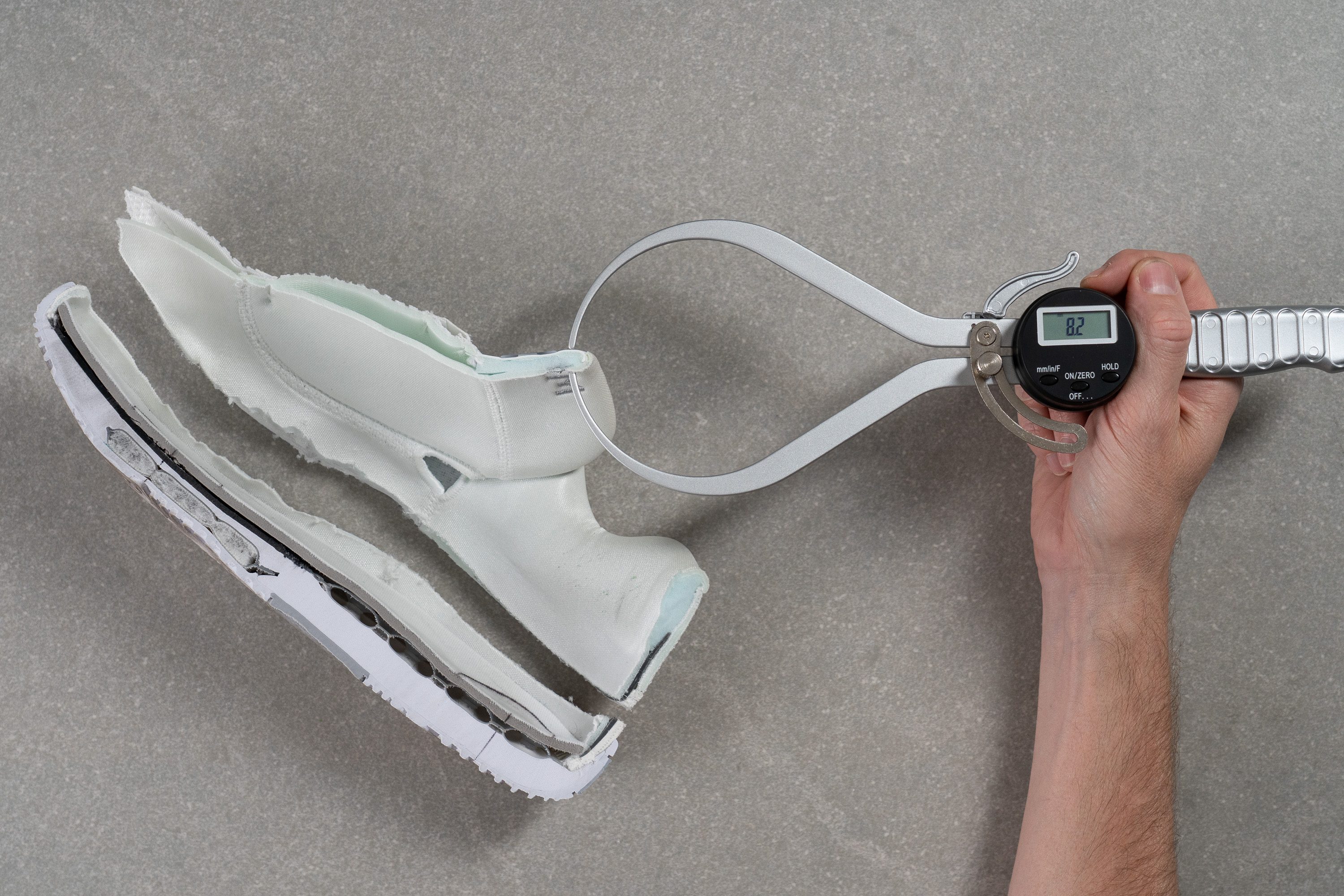
| KD 18 | 8.2 mm |
| Average | 9.3 mm |
Tongue: gusset type
The shoe's fully-gusseted tongue works in tandem with its external caging to create a very secure midfoot containment.
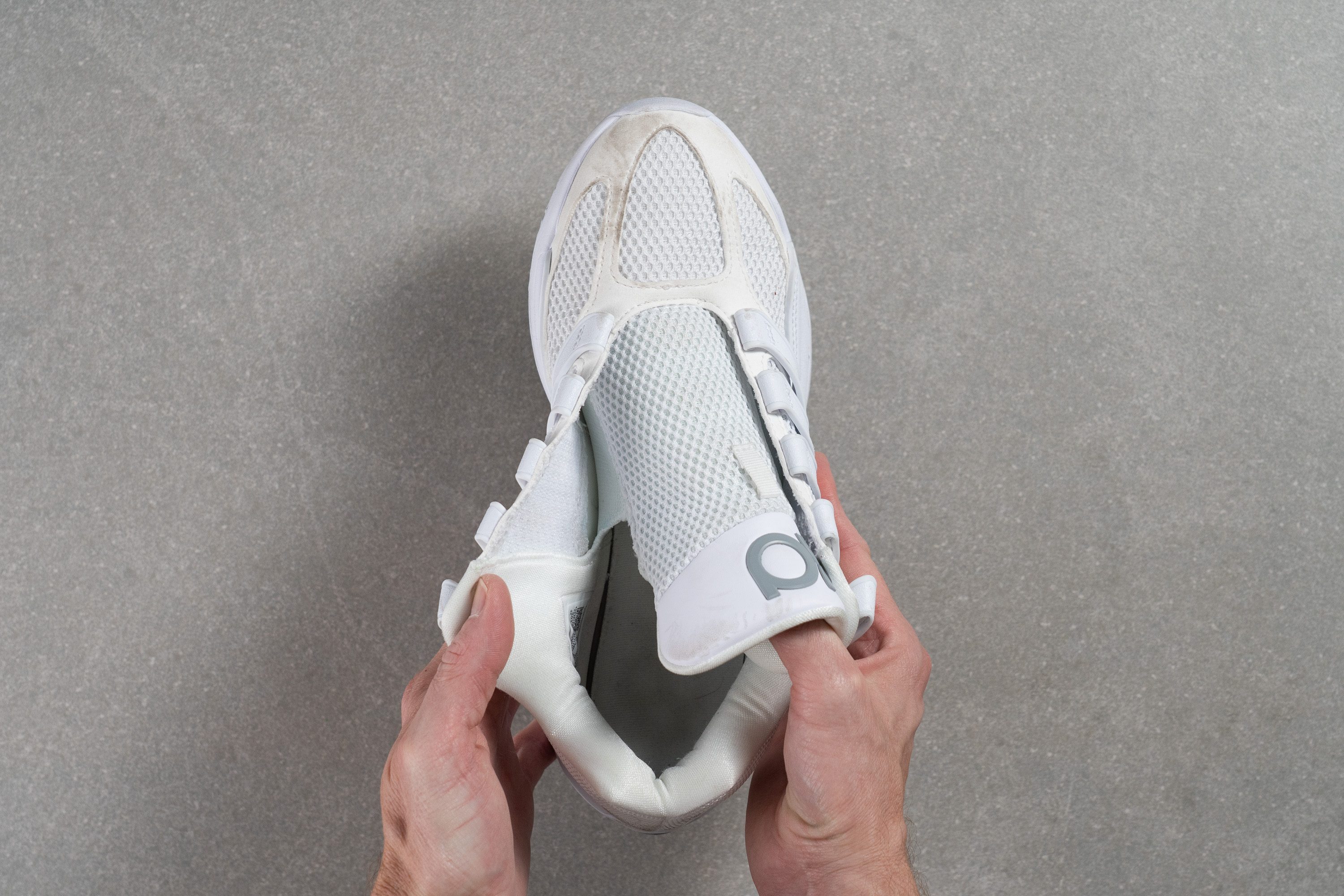
| KD 18 | Both sides (full) |
Price
It seems like the $5 price increase plagued all recent Nike shoe releases, but it's not that bad in our opinion. Considering that the KD 18 sustained very minor changes from the previous version (mostly in the upper), a higher price increase would feel illegal.
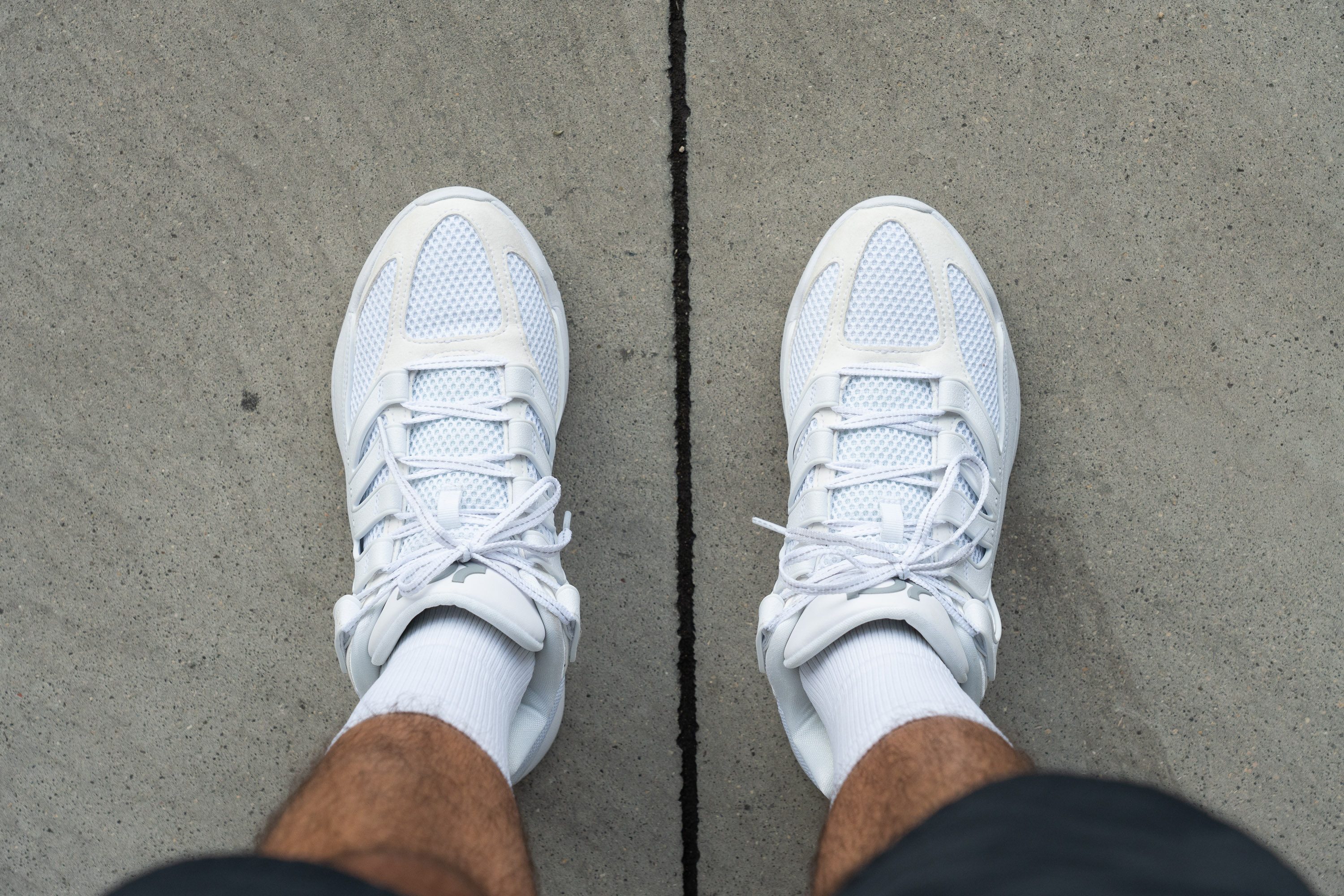
| KD 18 | $155 |
Heel tab
The KD 18 is pretty easy to put on and take off even in the absence of a pull tab or a finger loop.
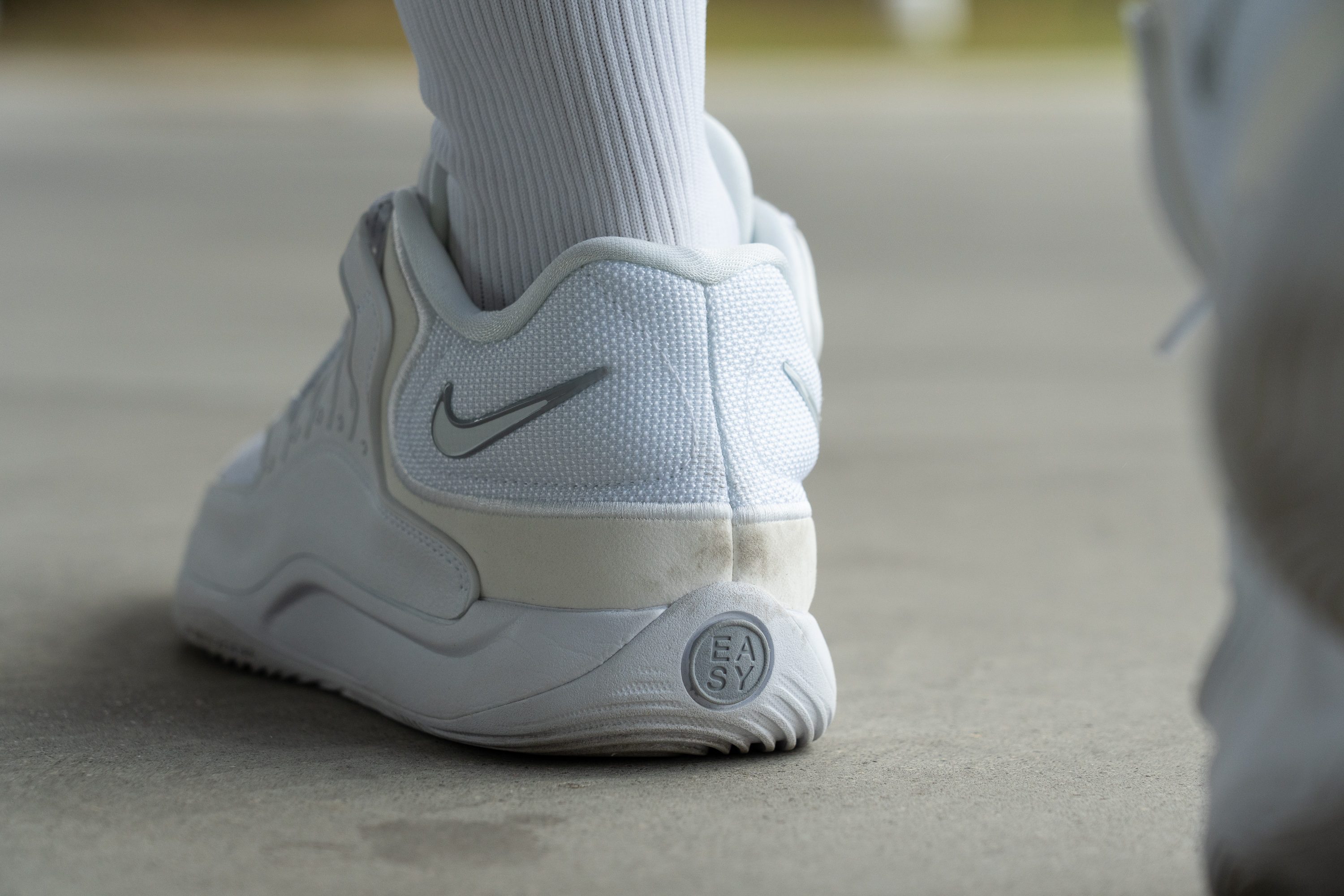
| KD 18 | None |
Laces
Even though we were able to achieve a nice and secure lockdown in this KD shoe, we are concerned about the longevity of its ultra-thin and frail-looking laces.
